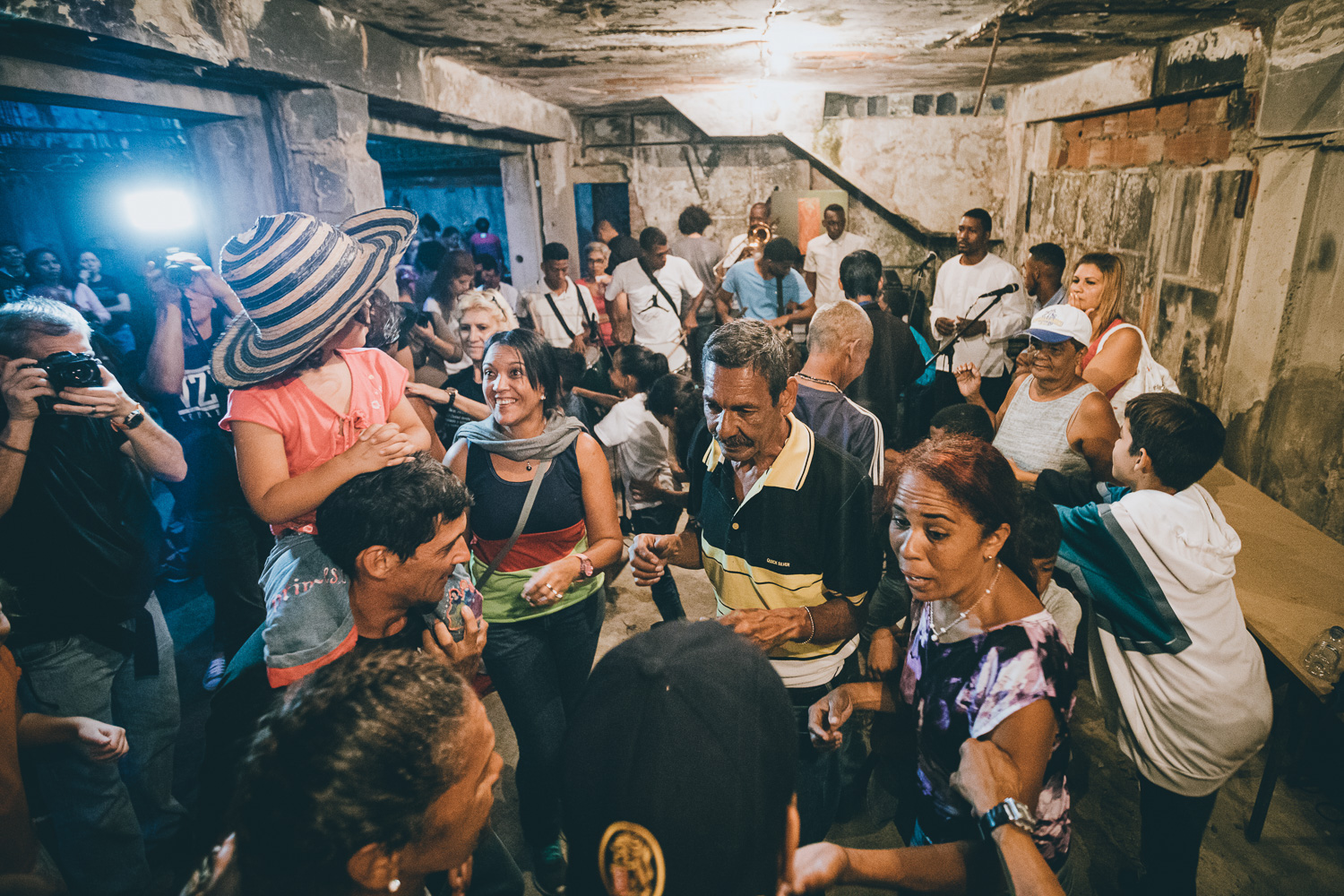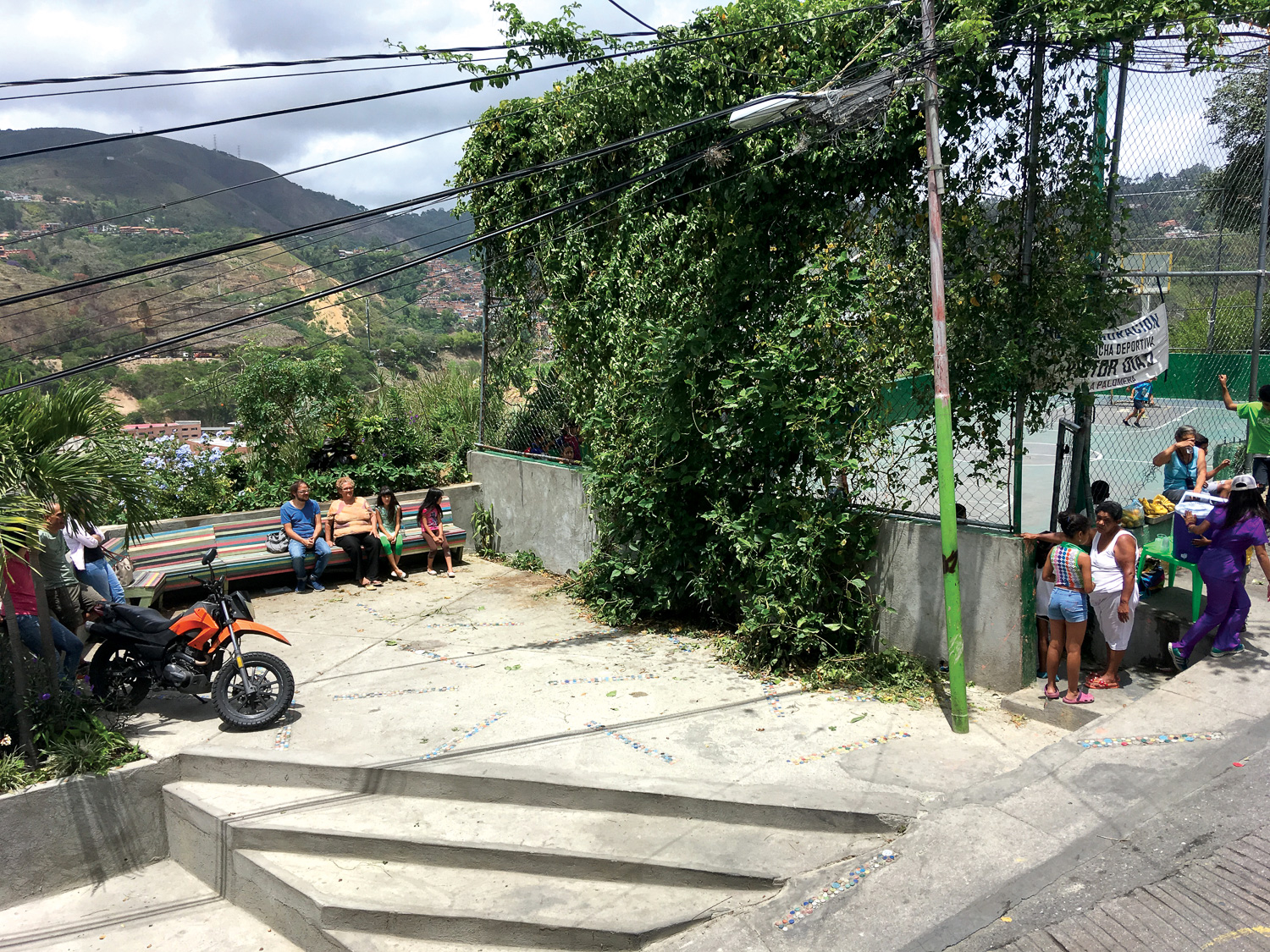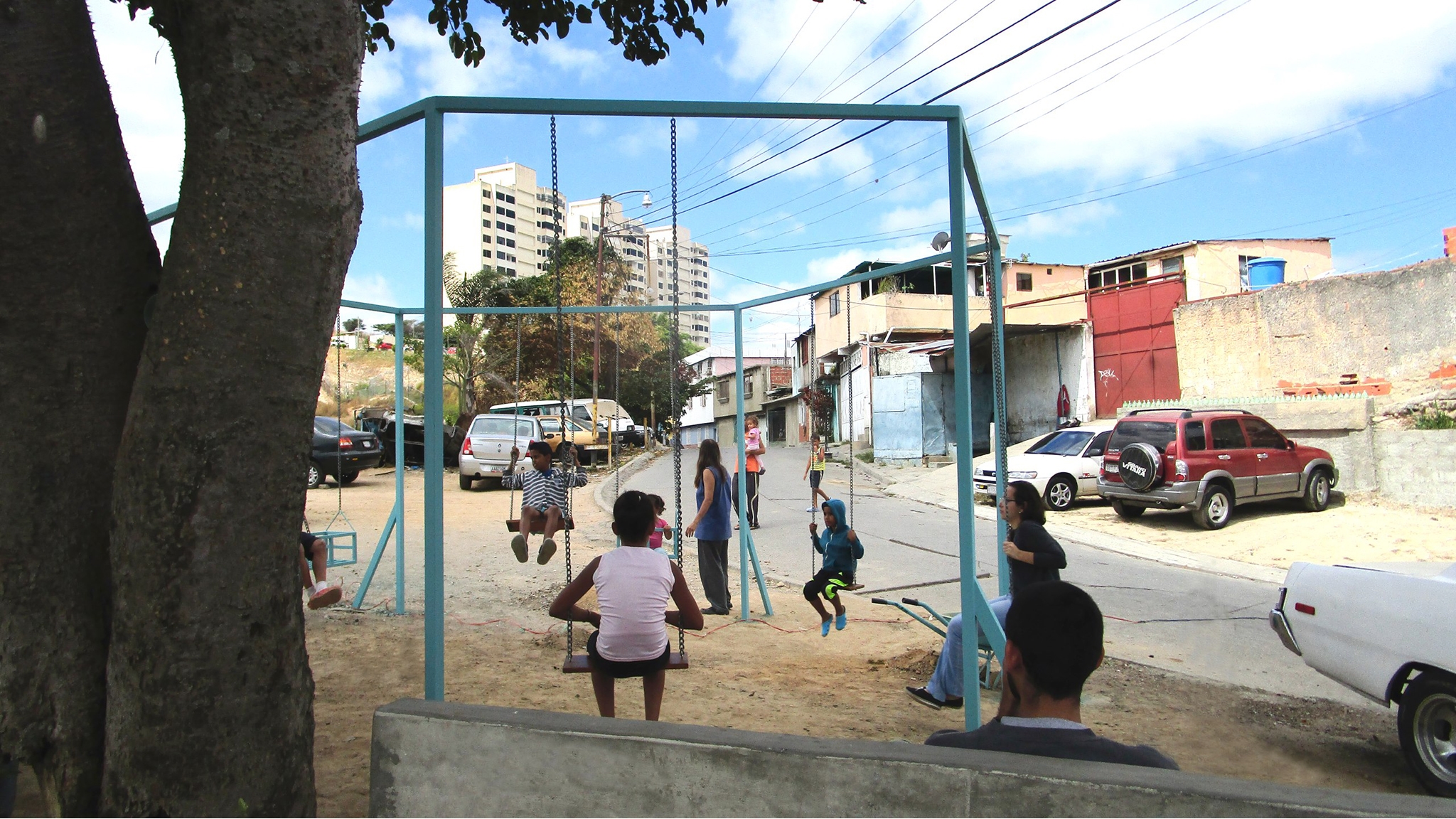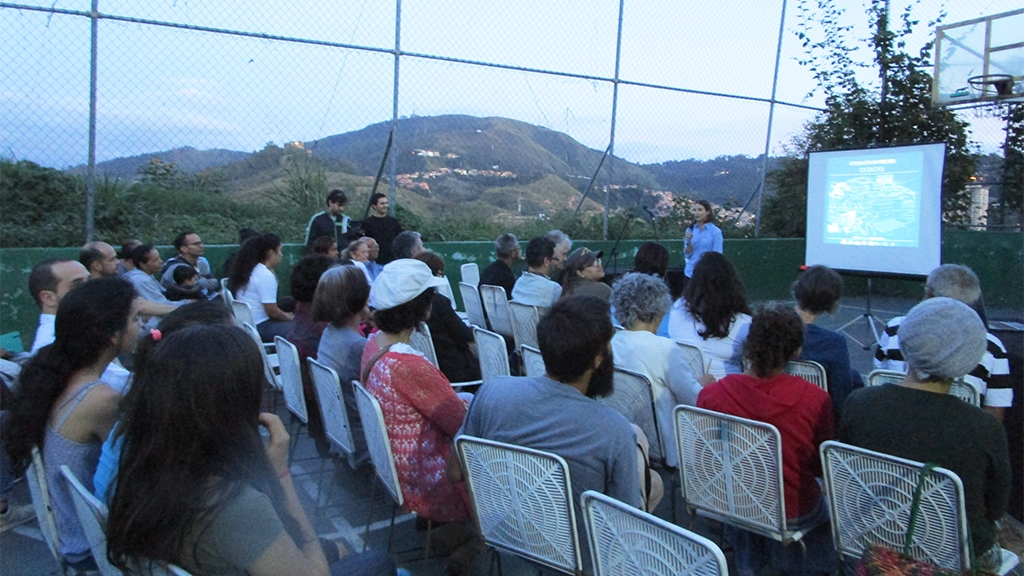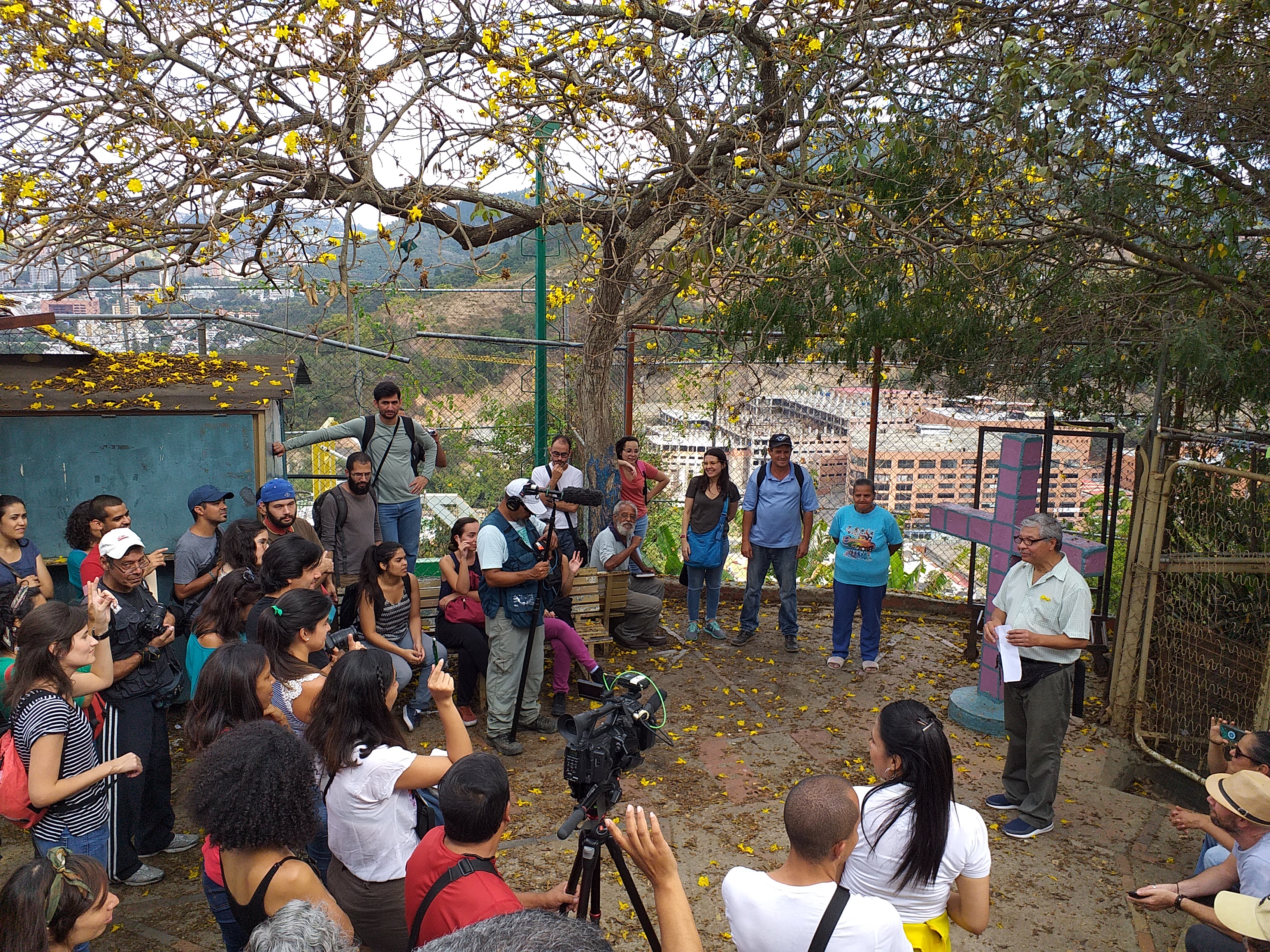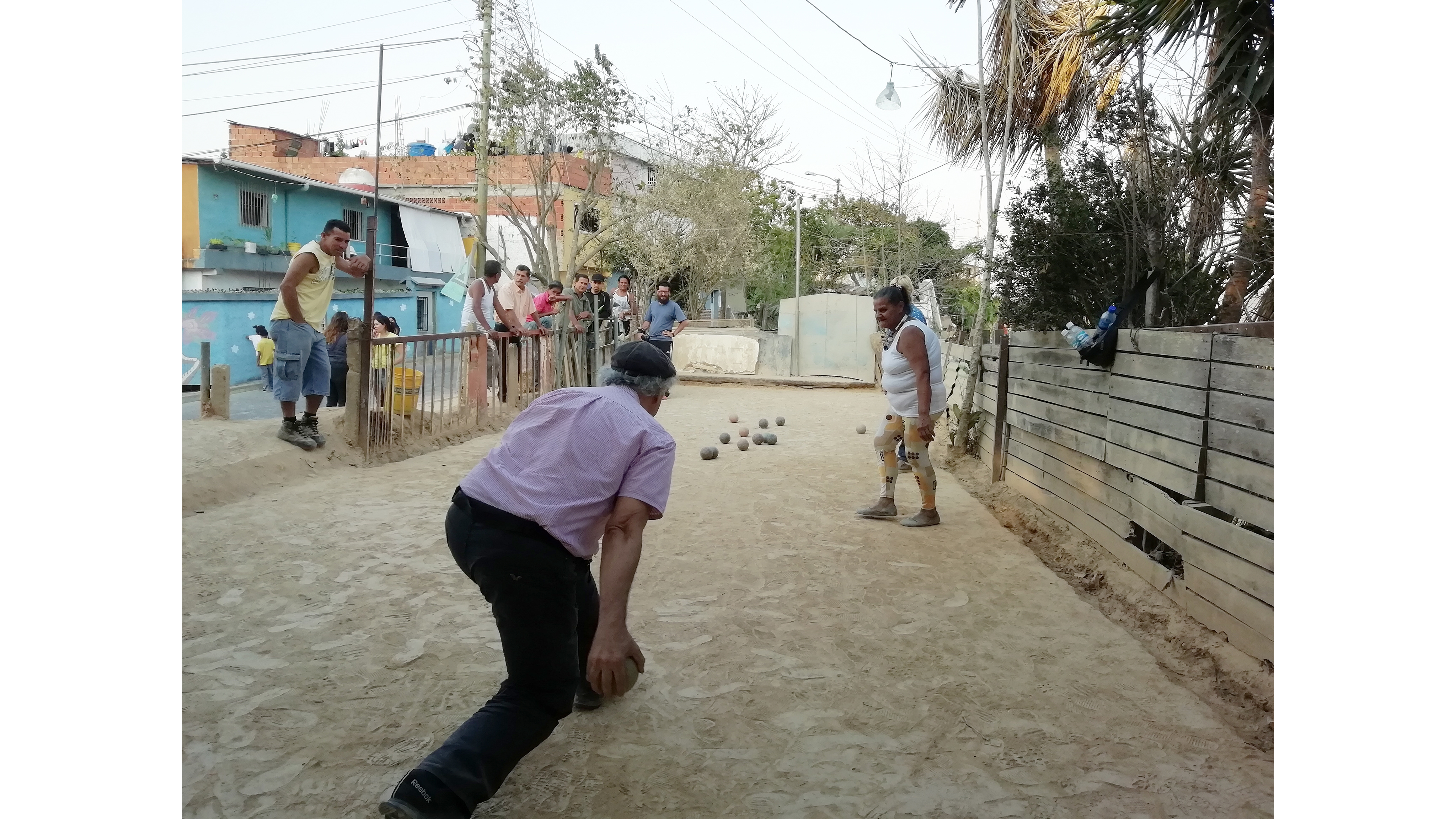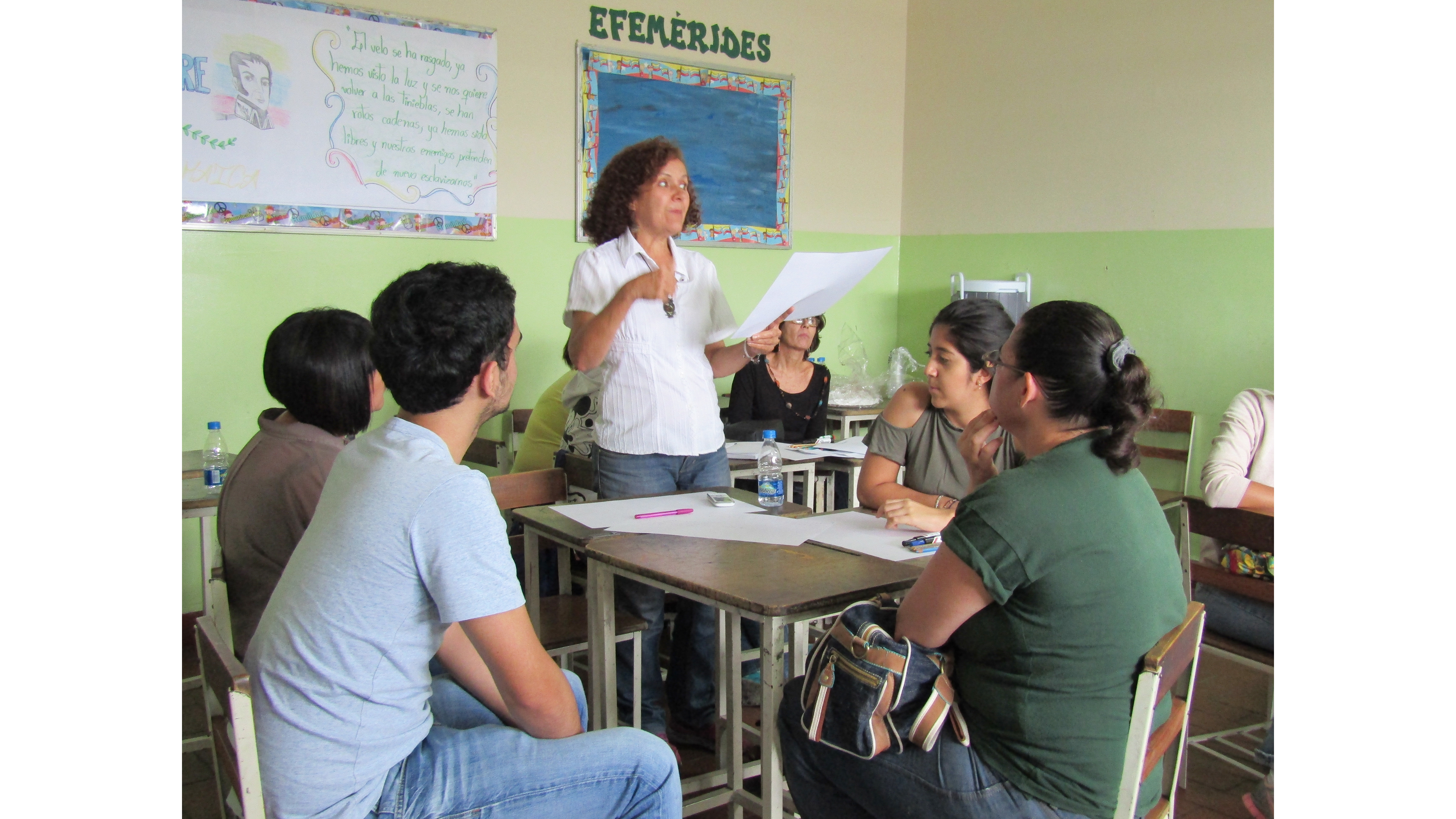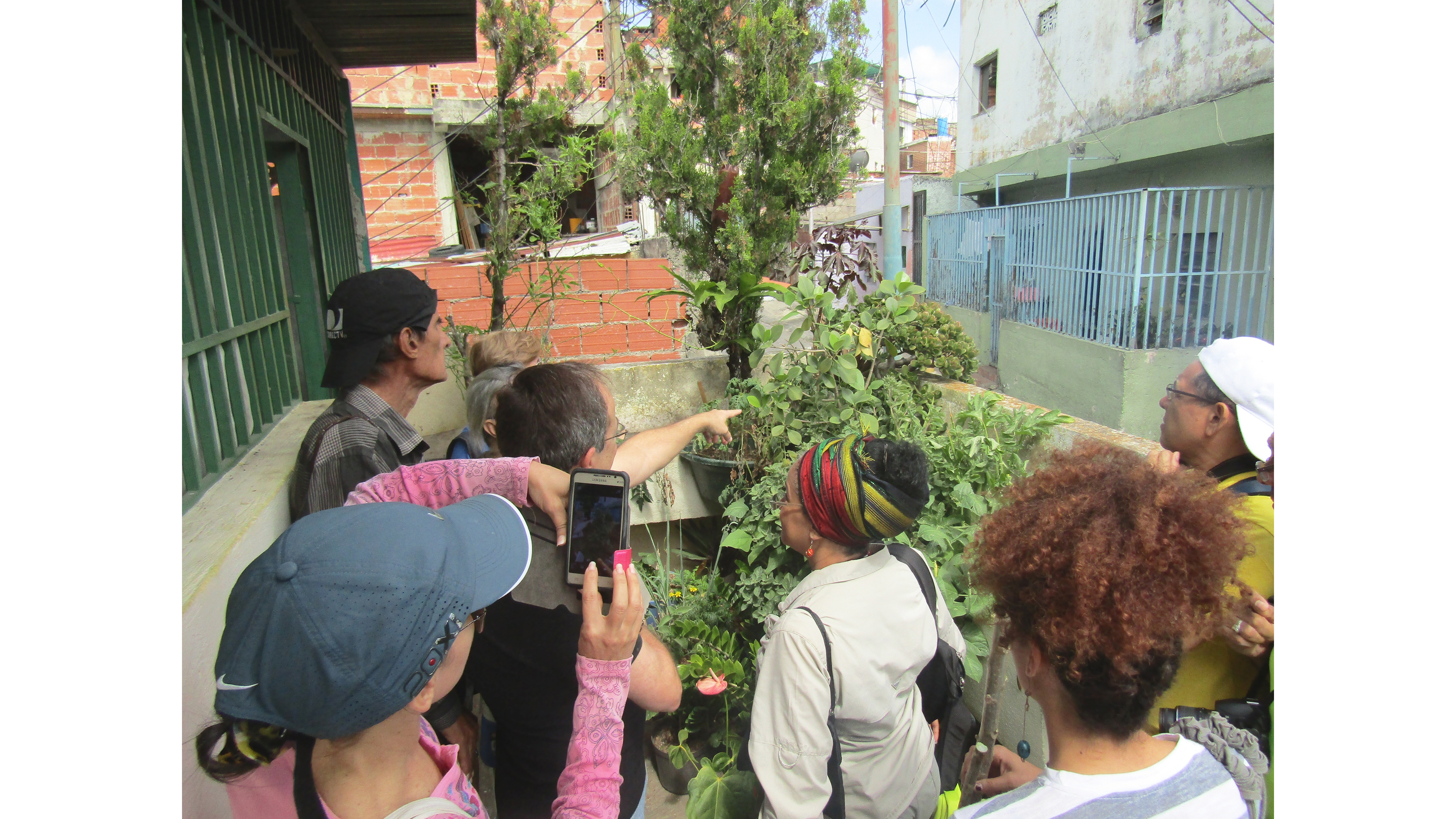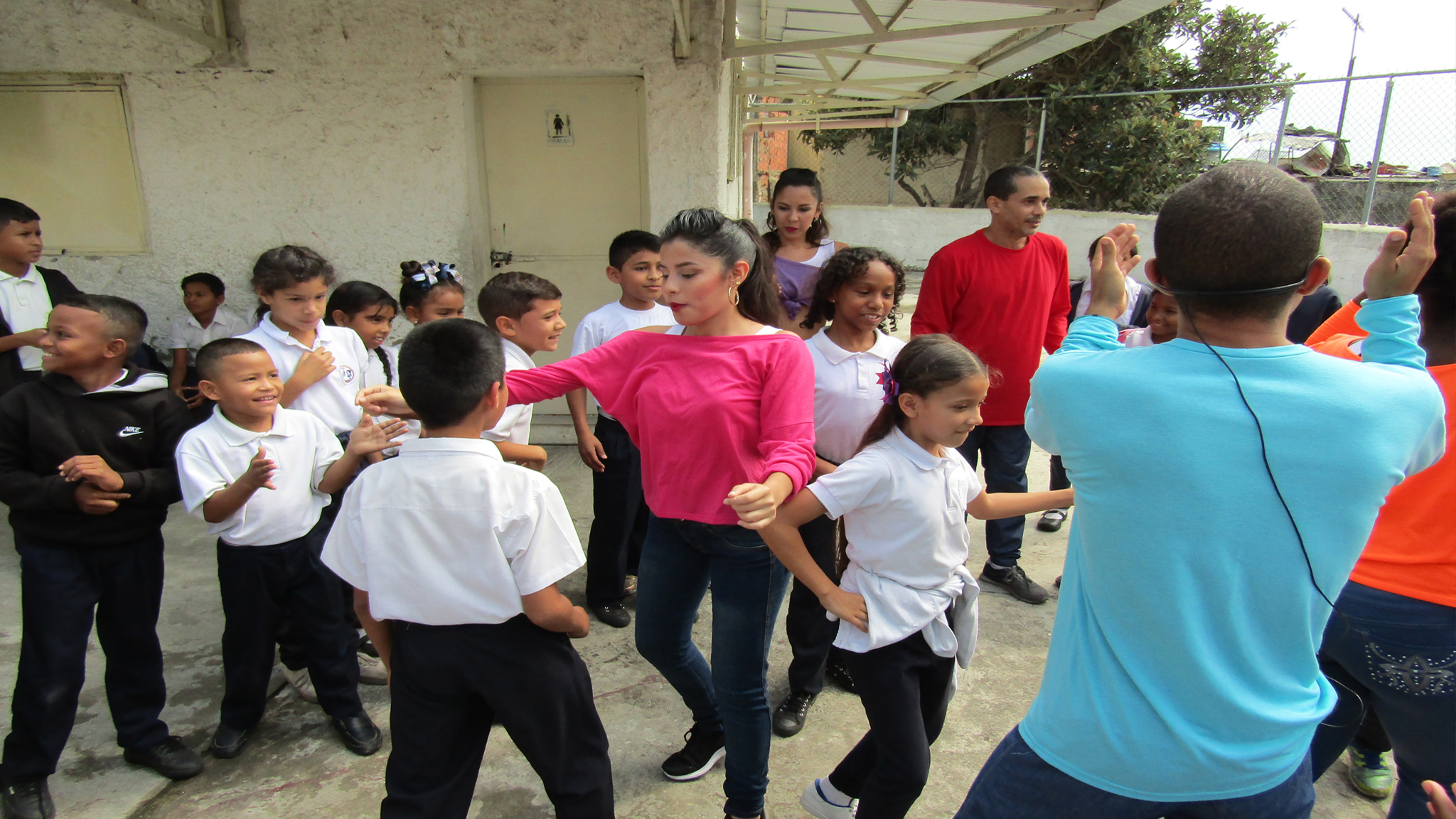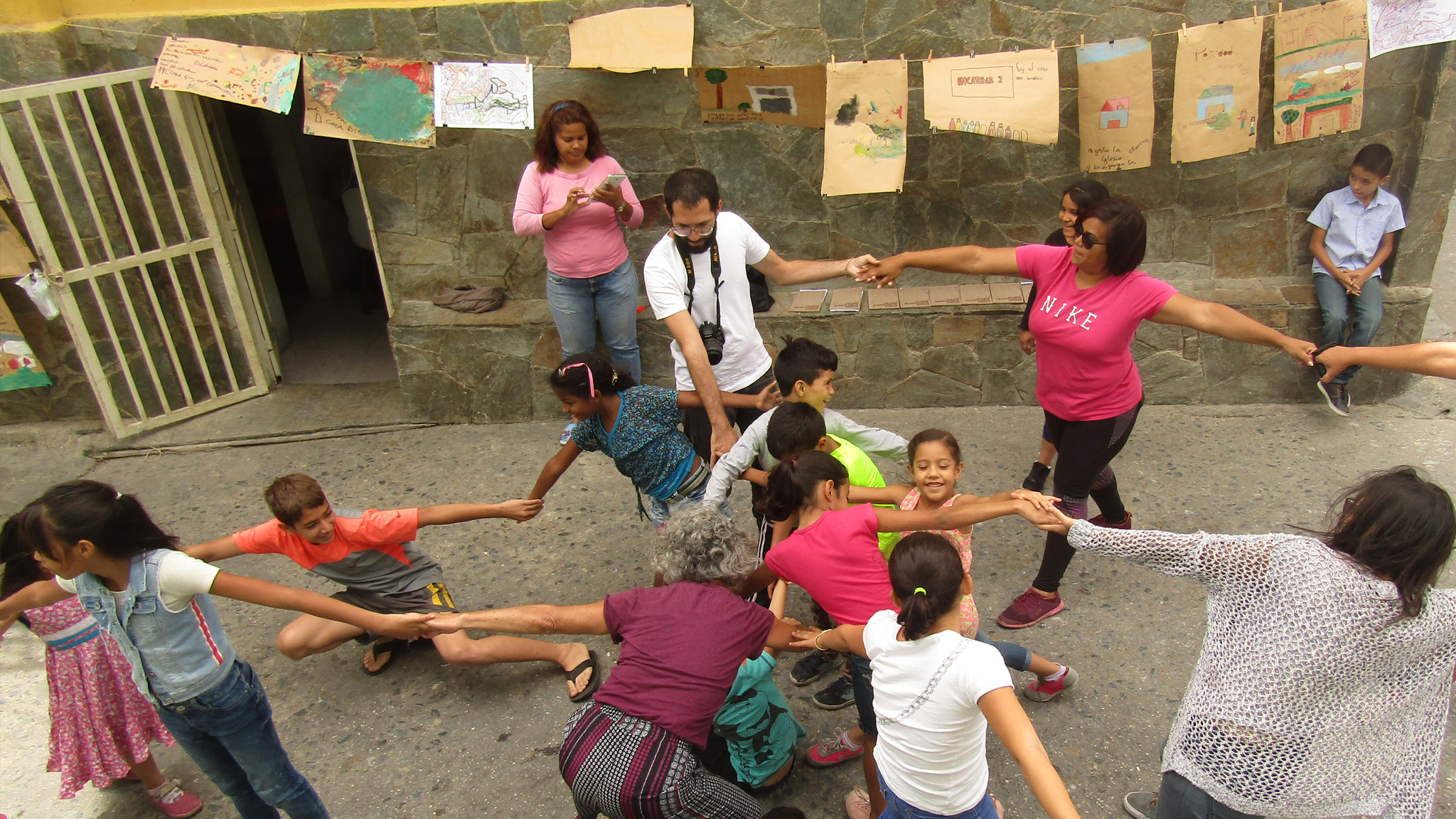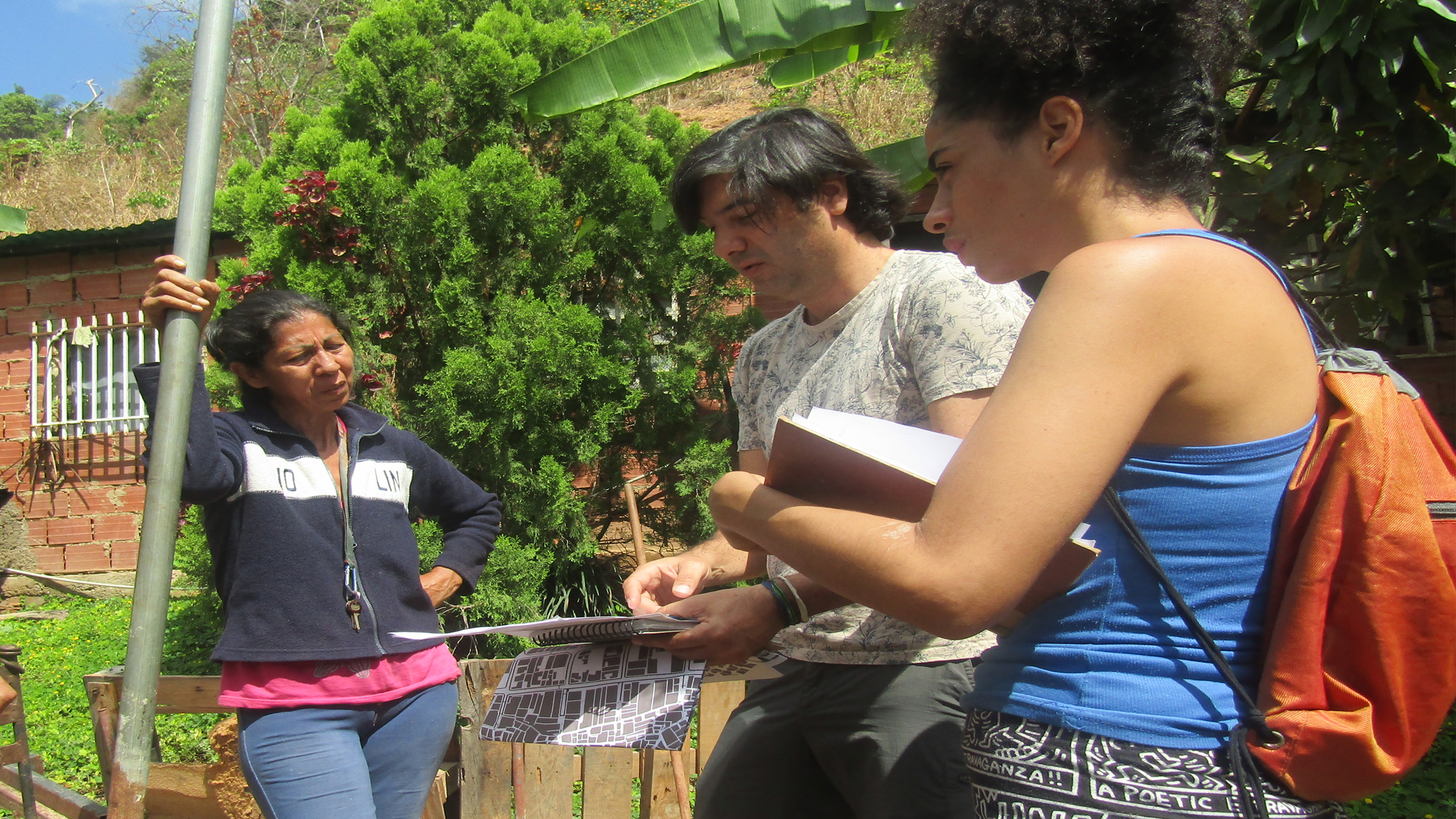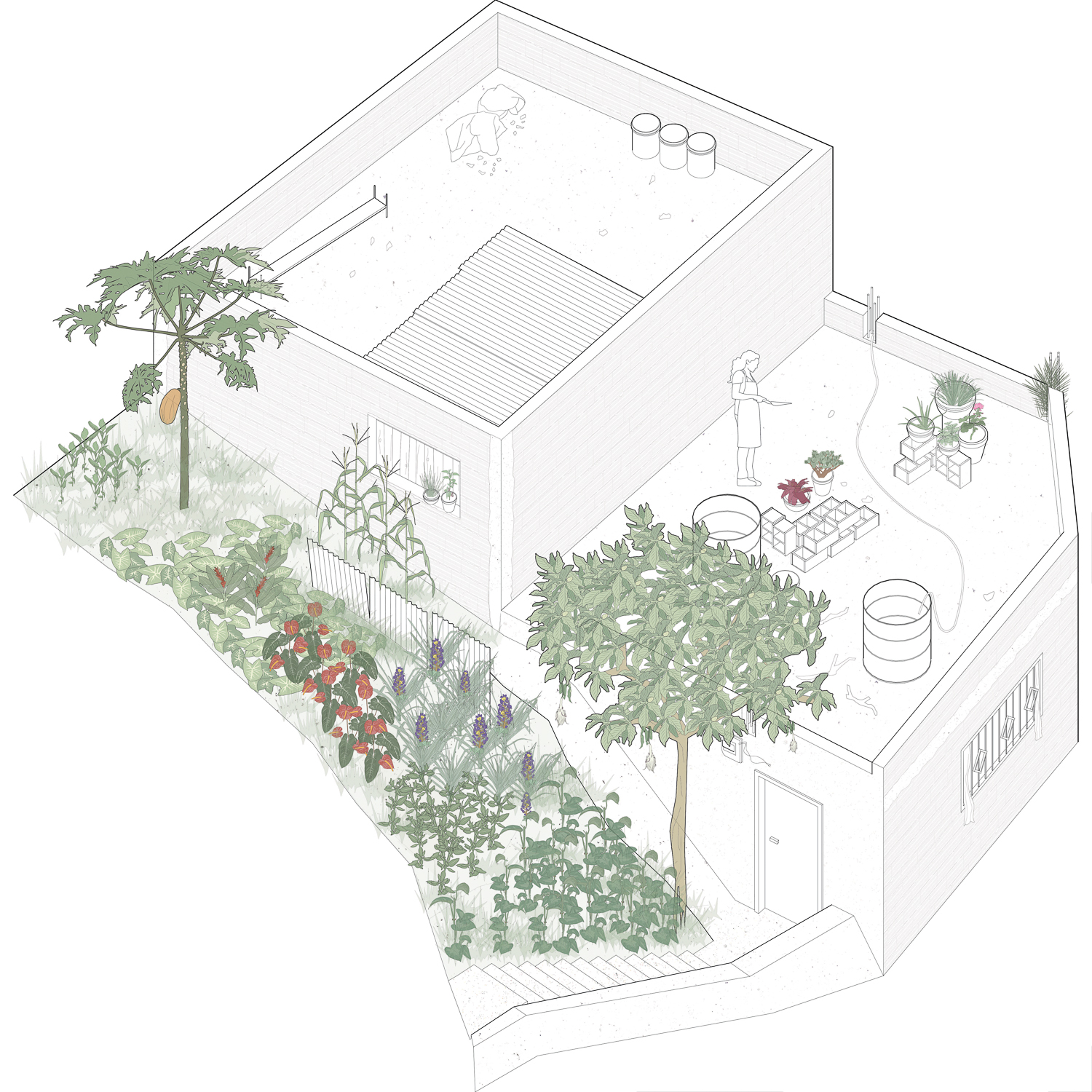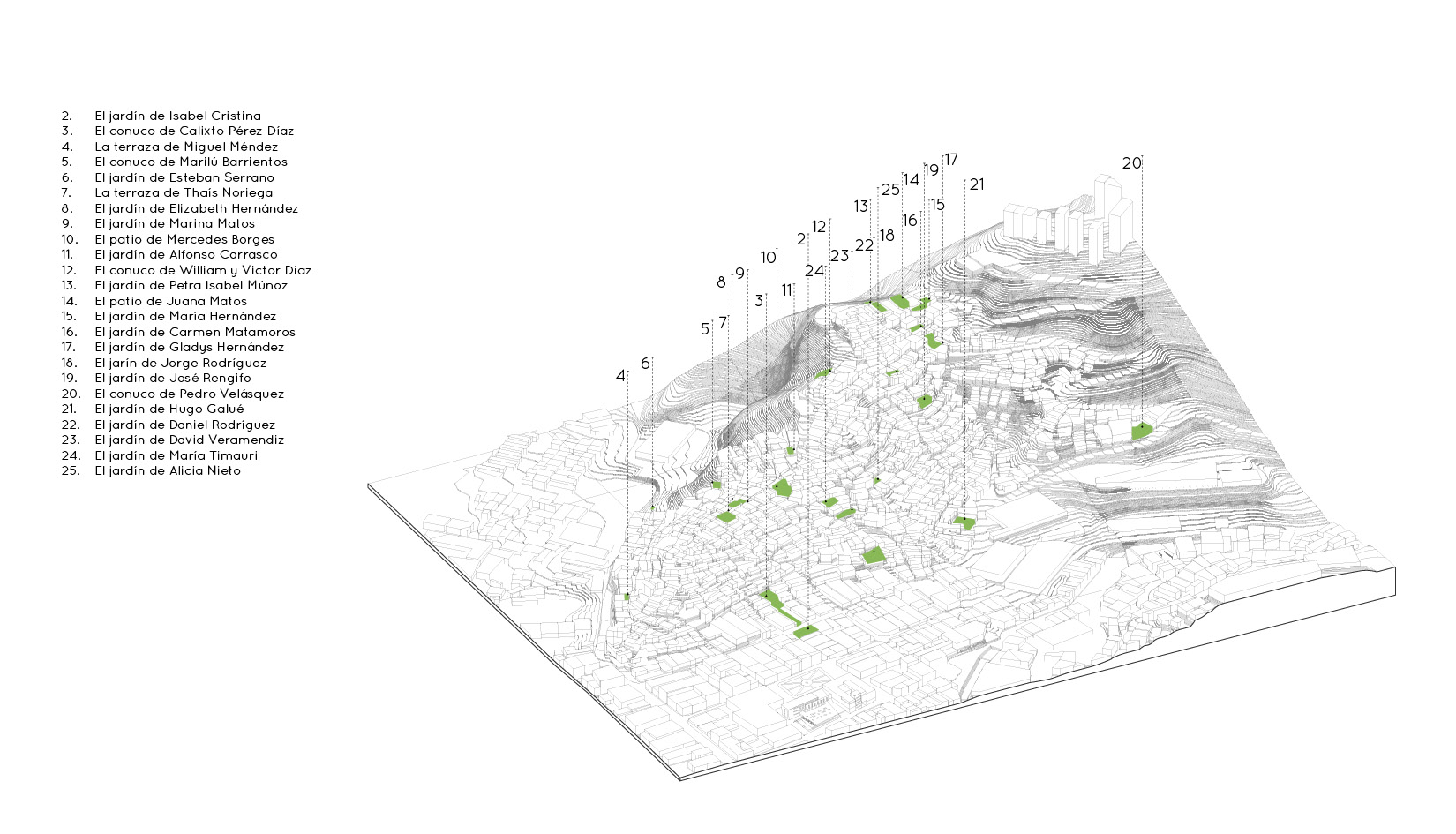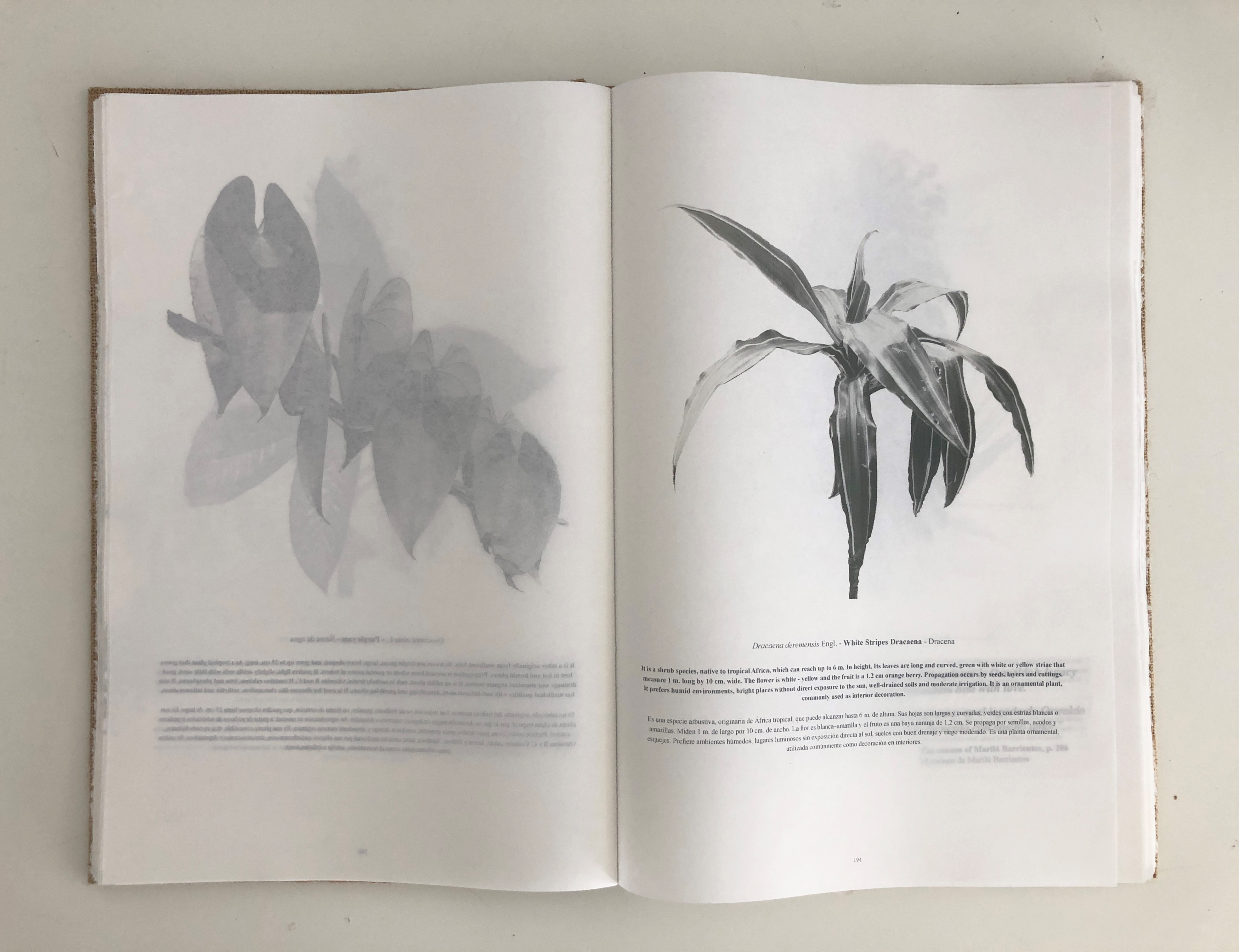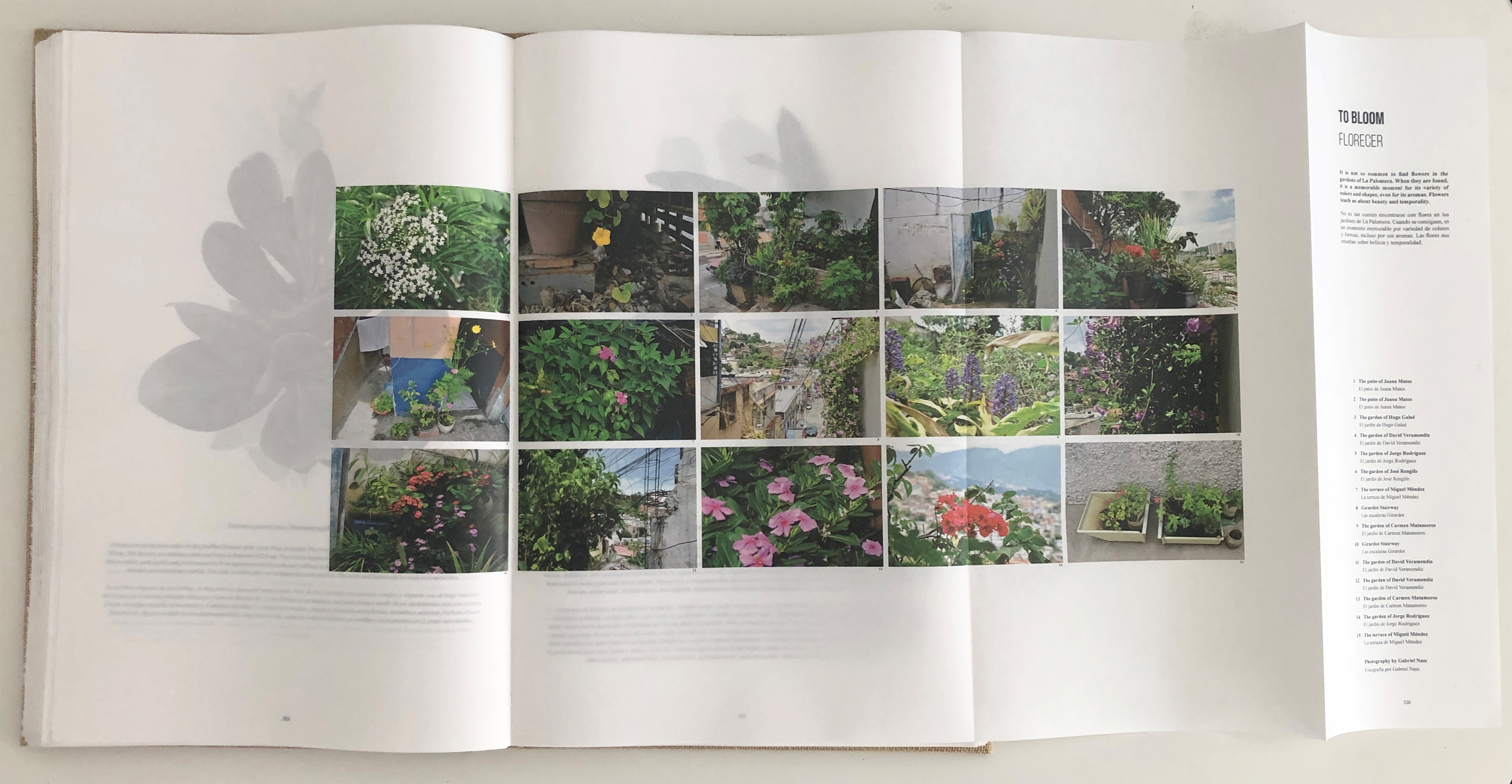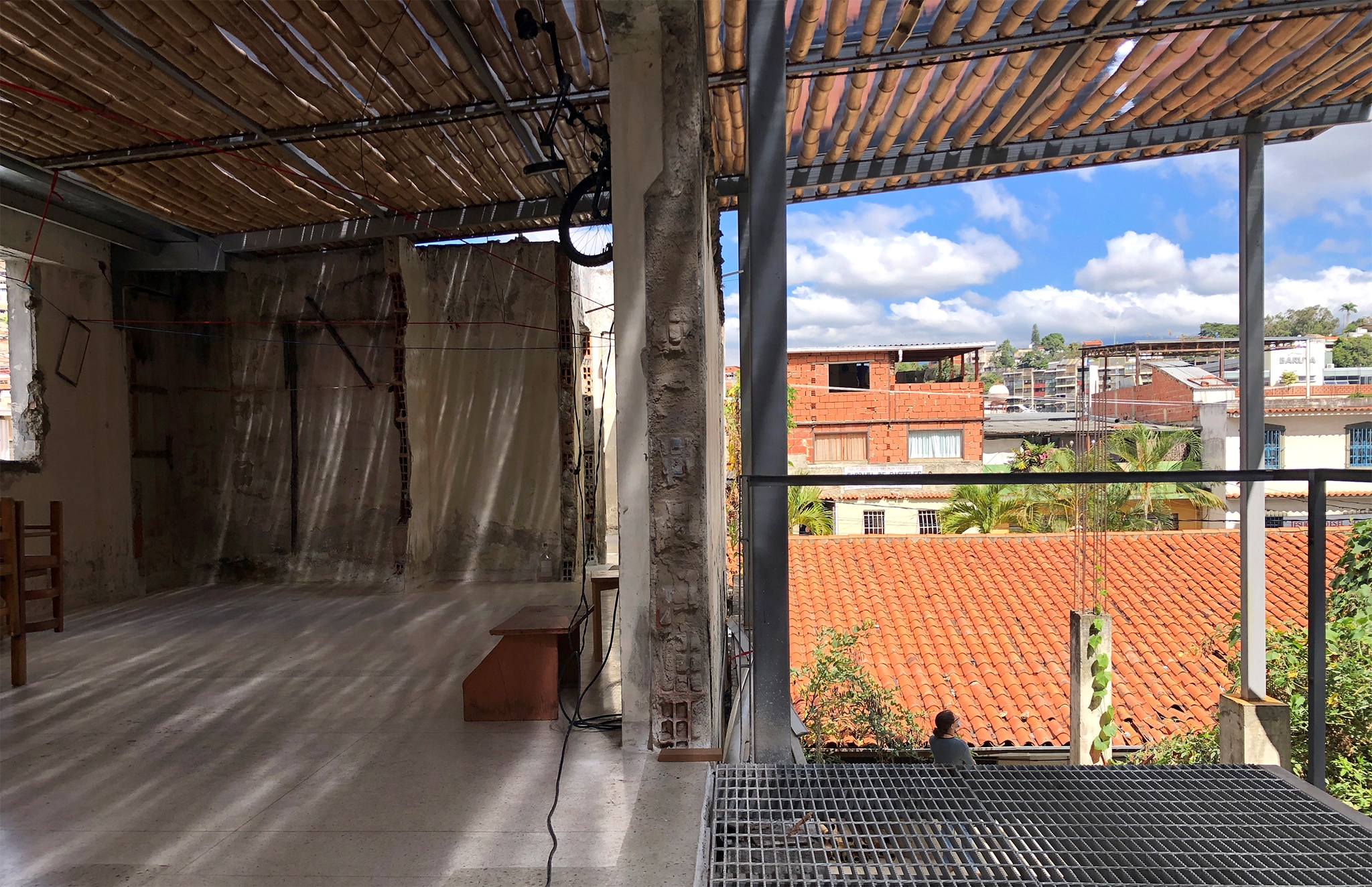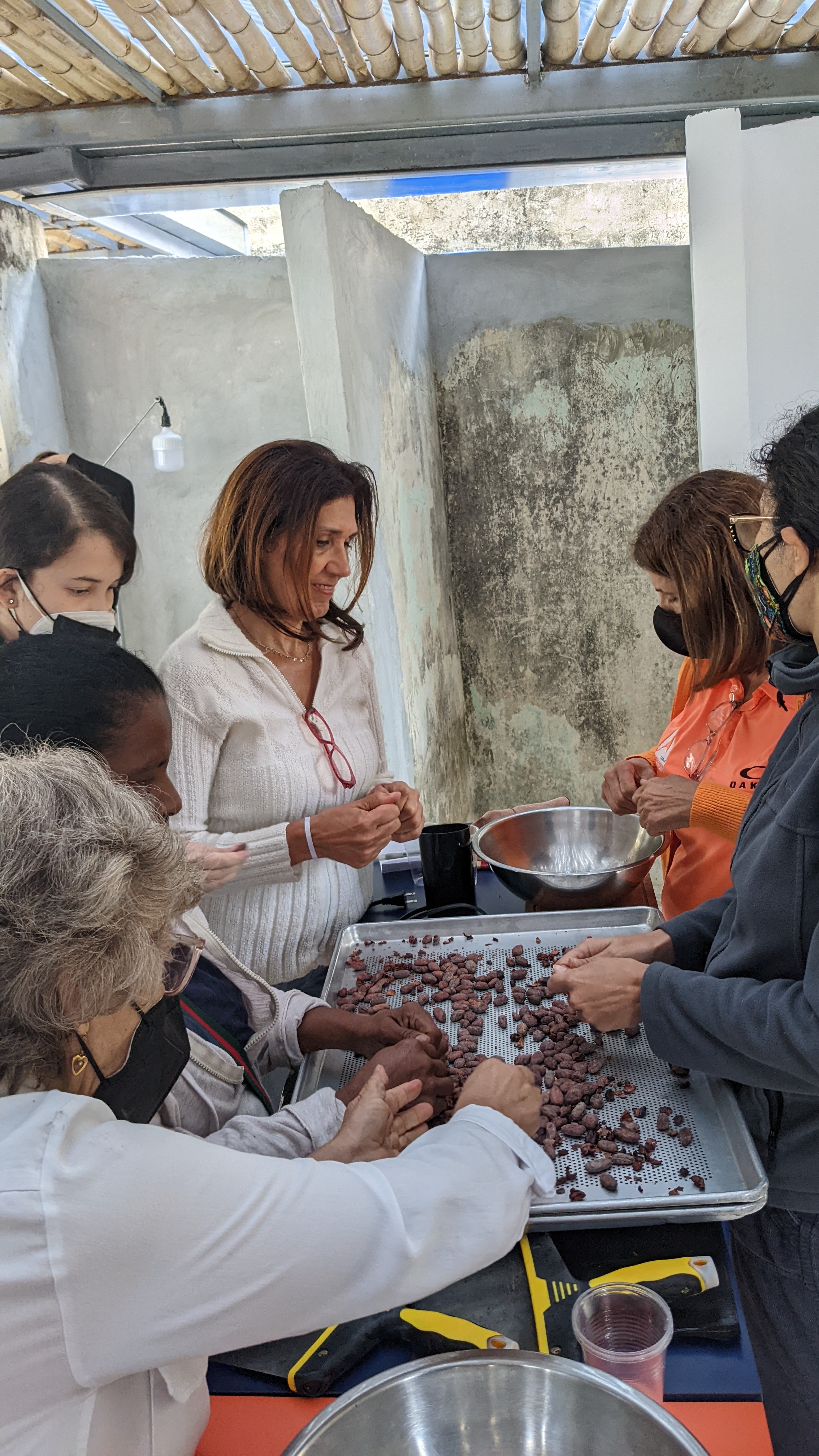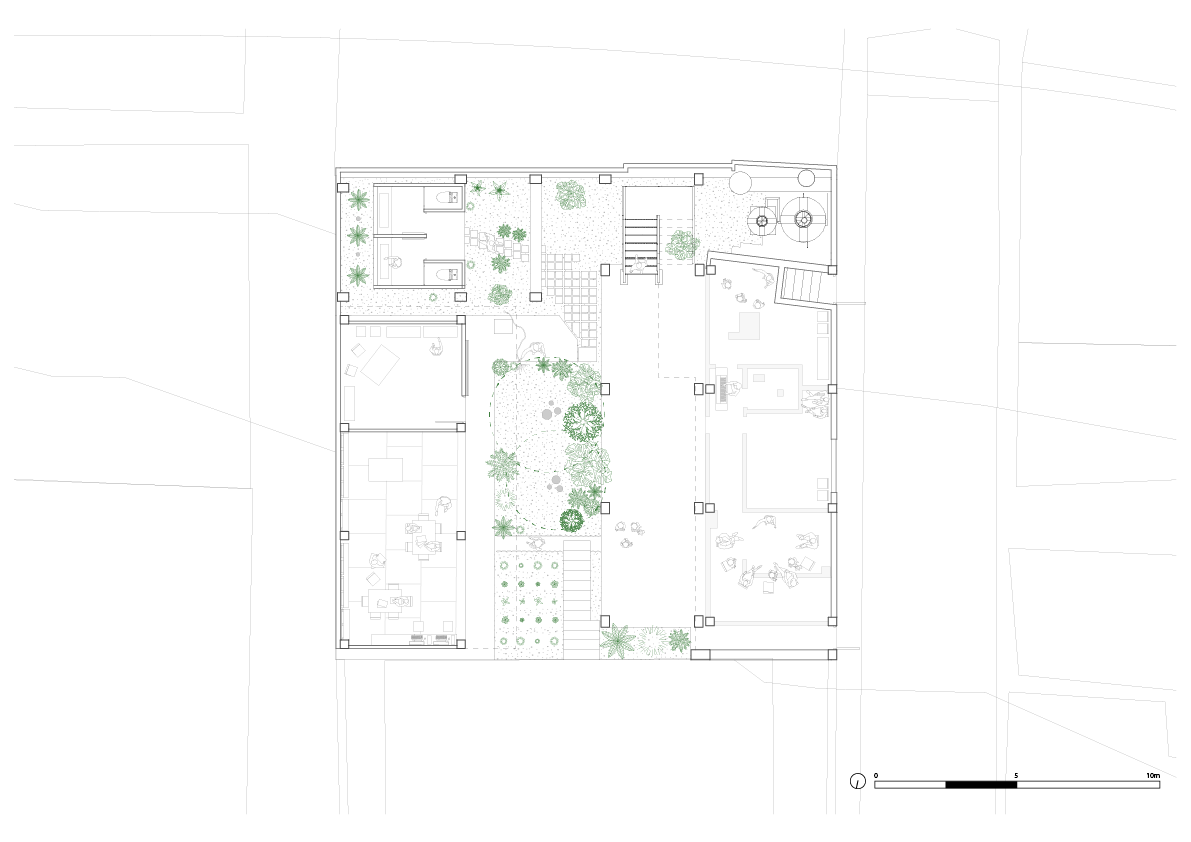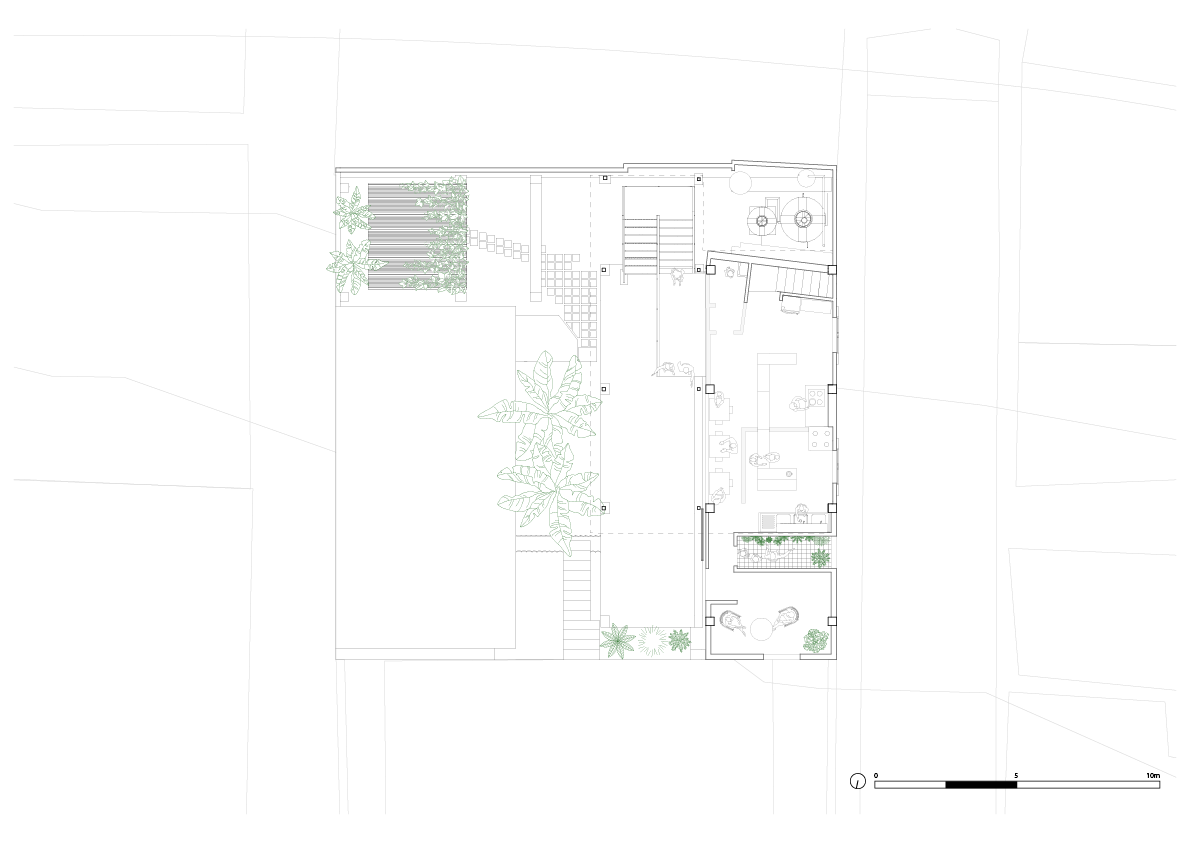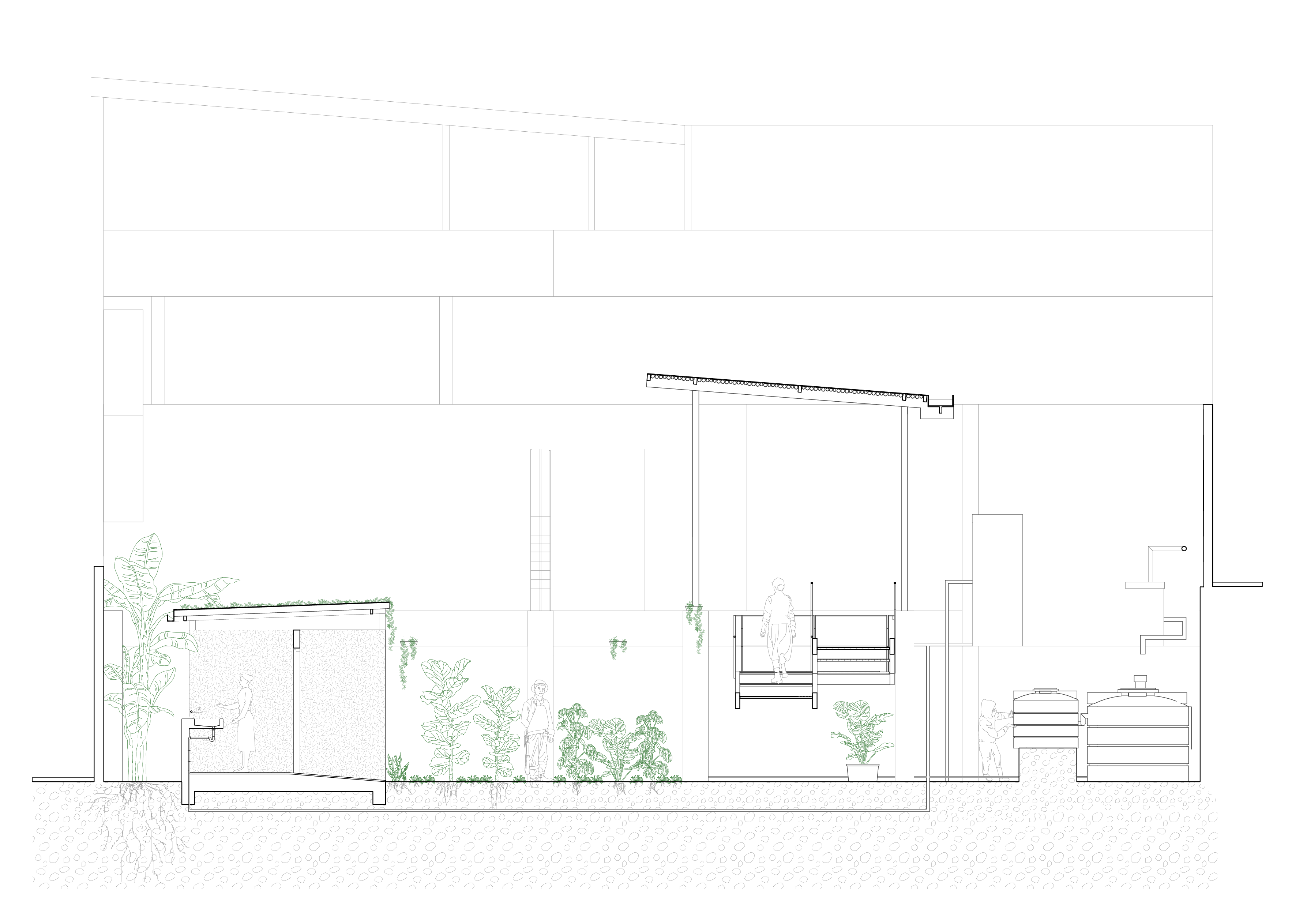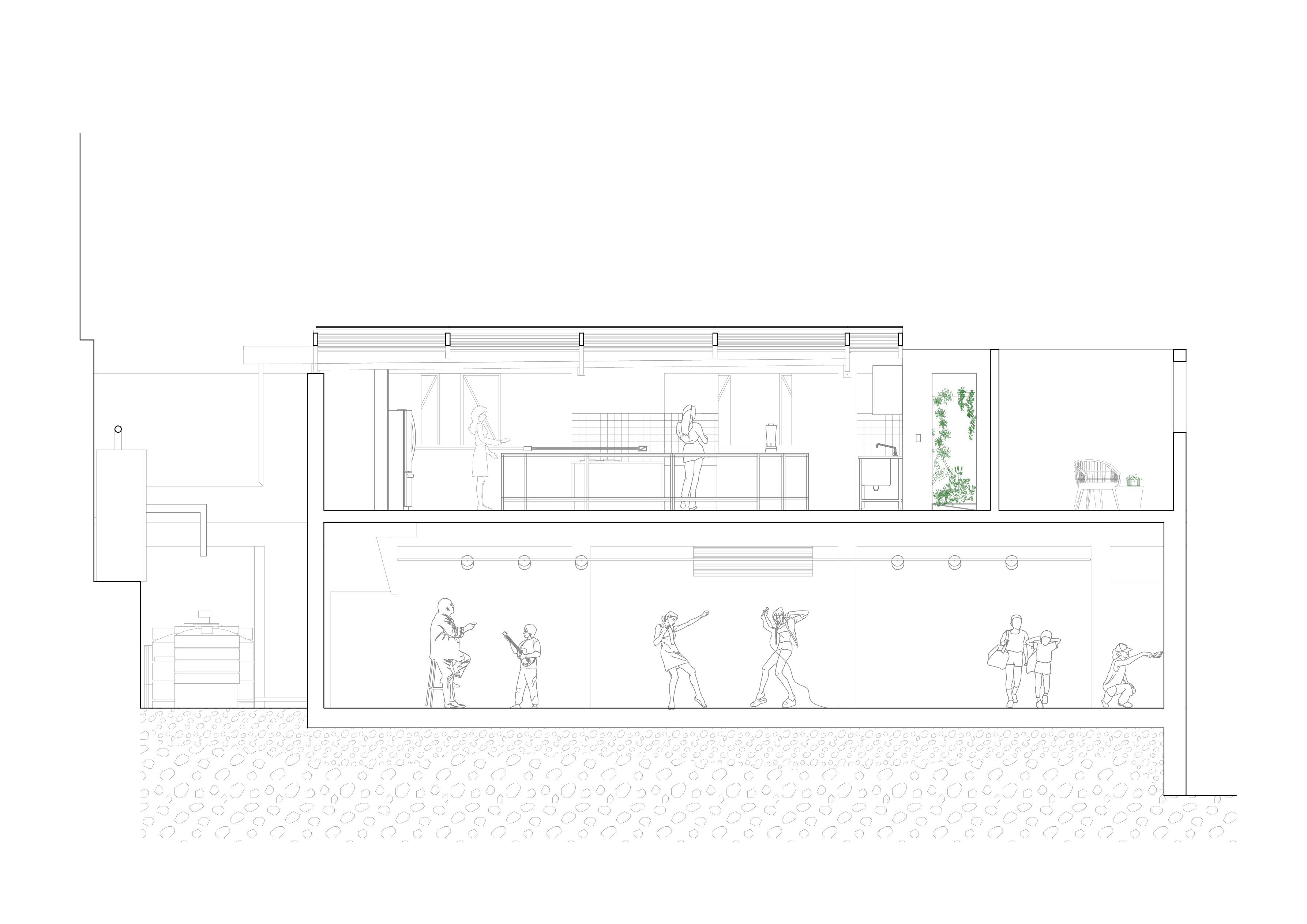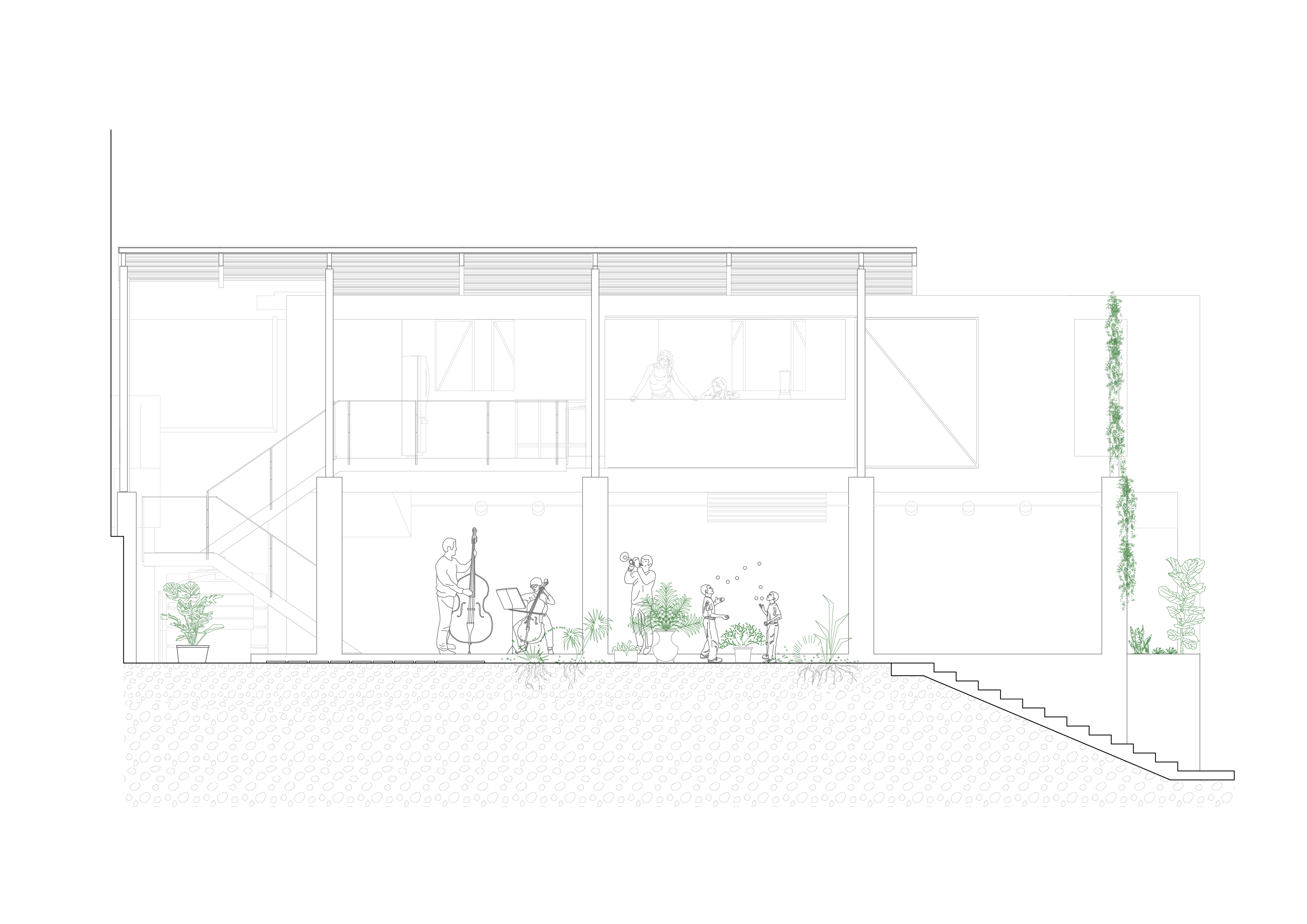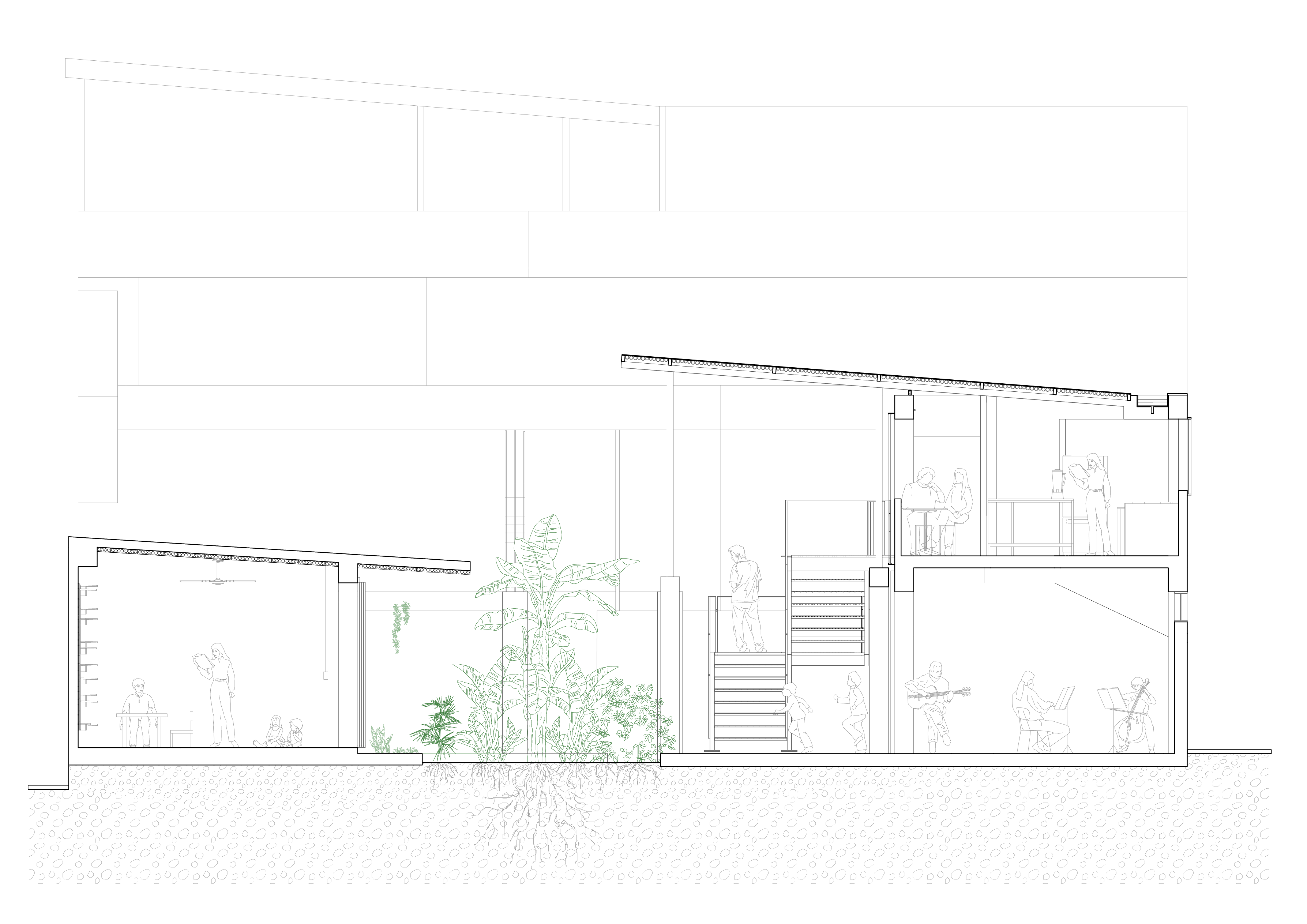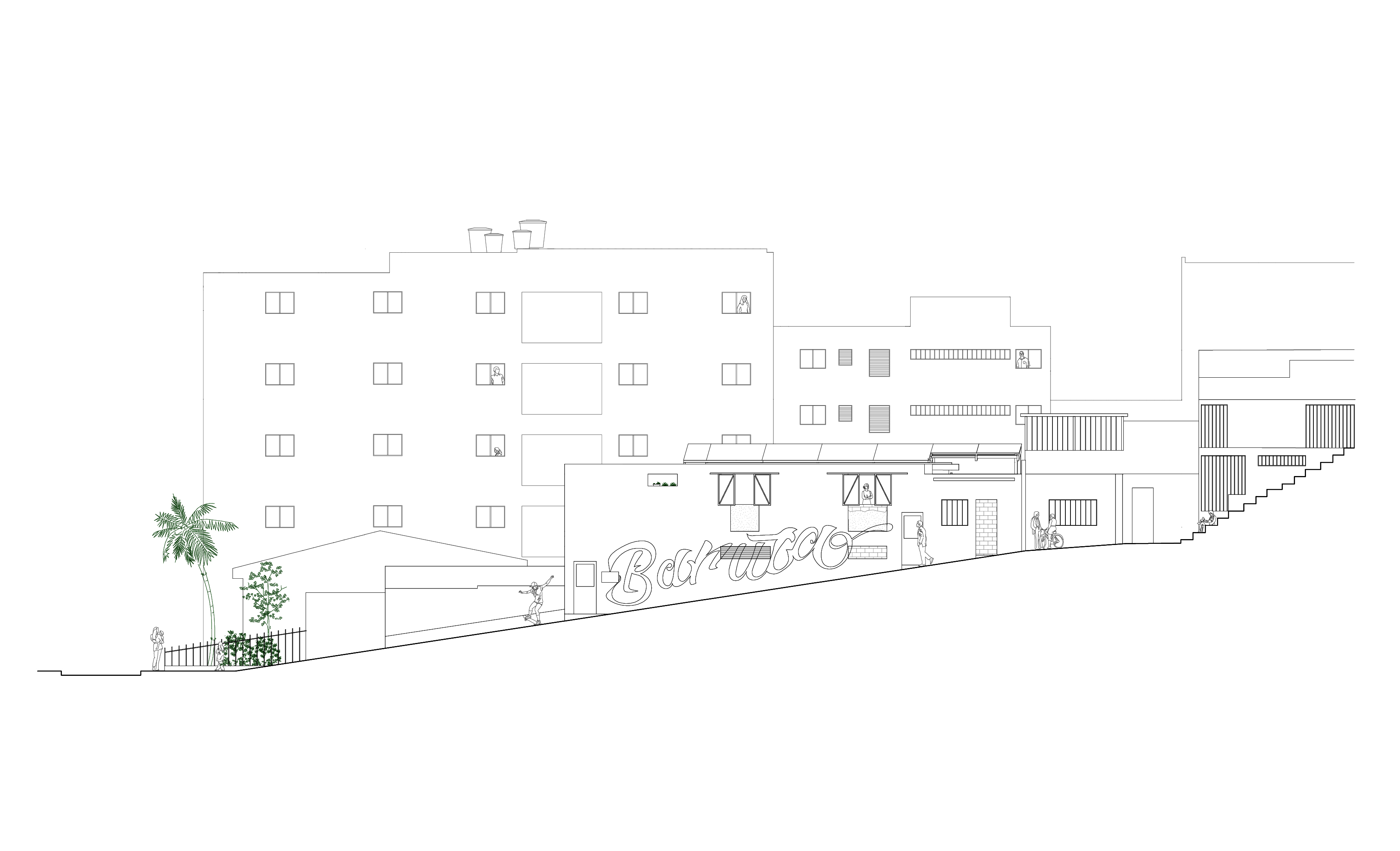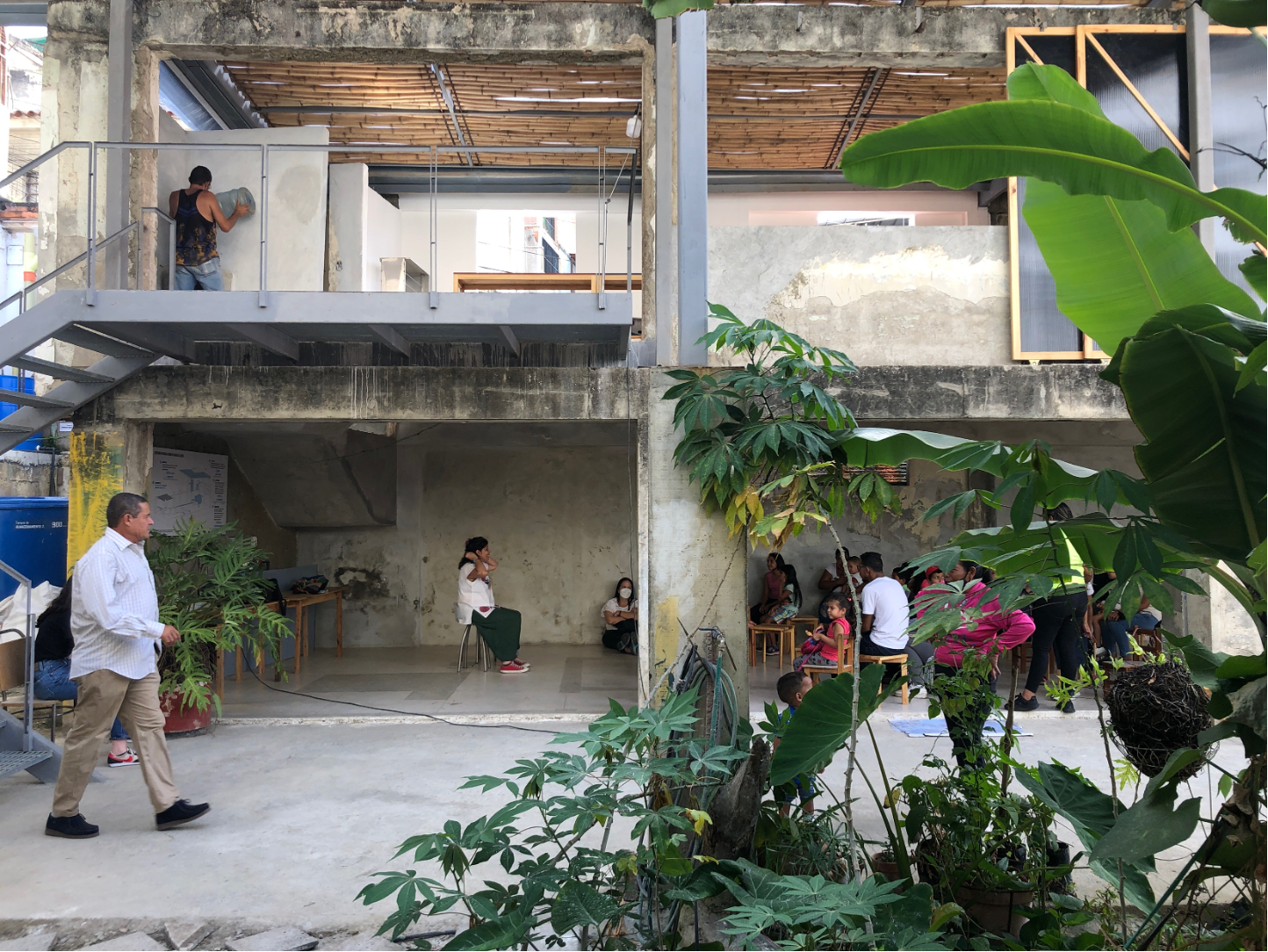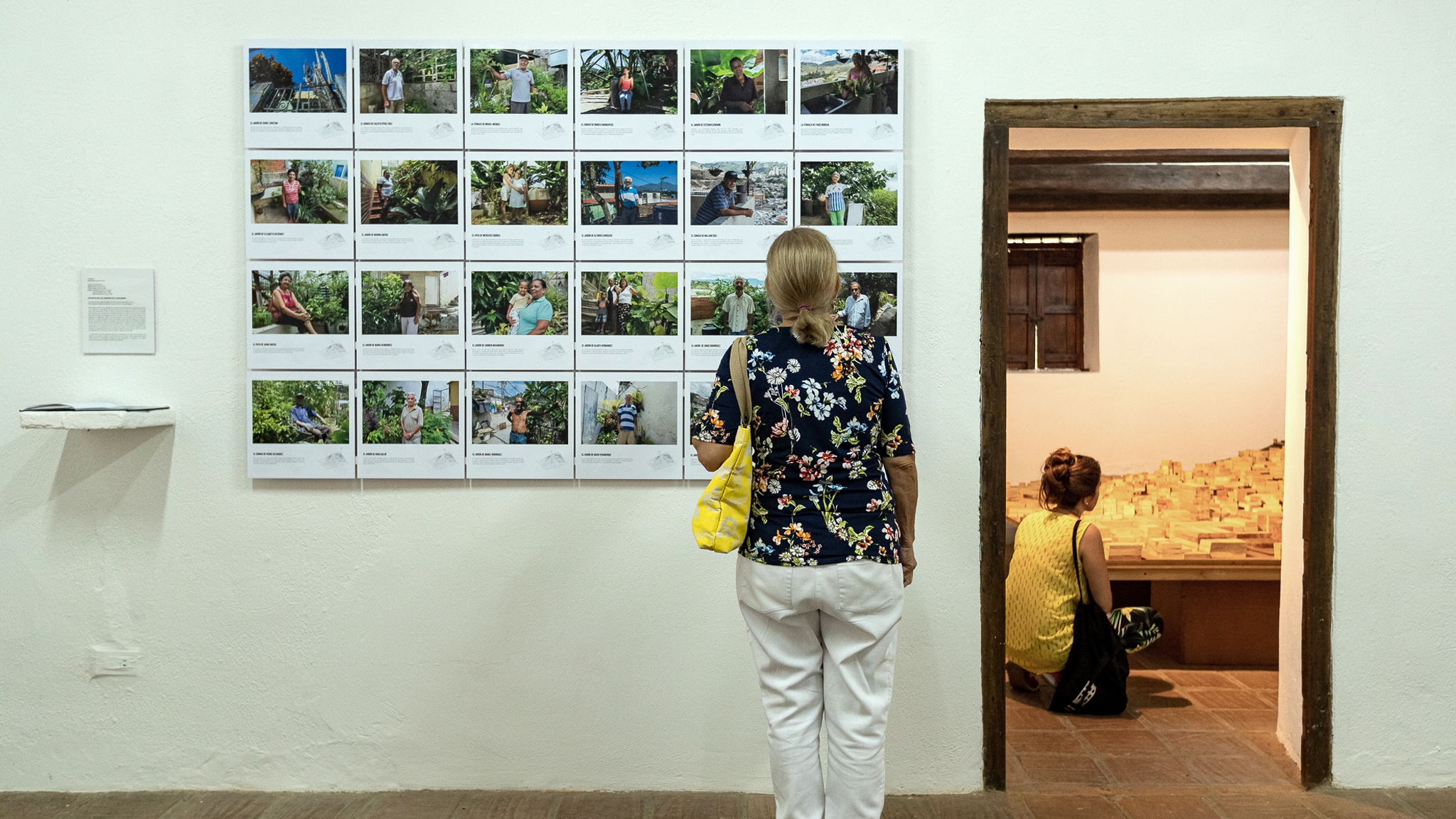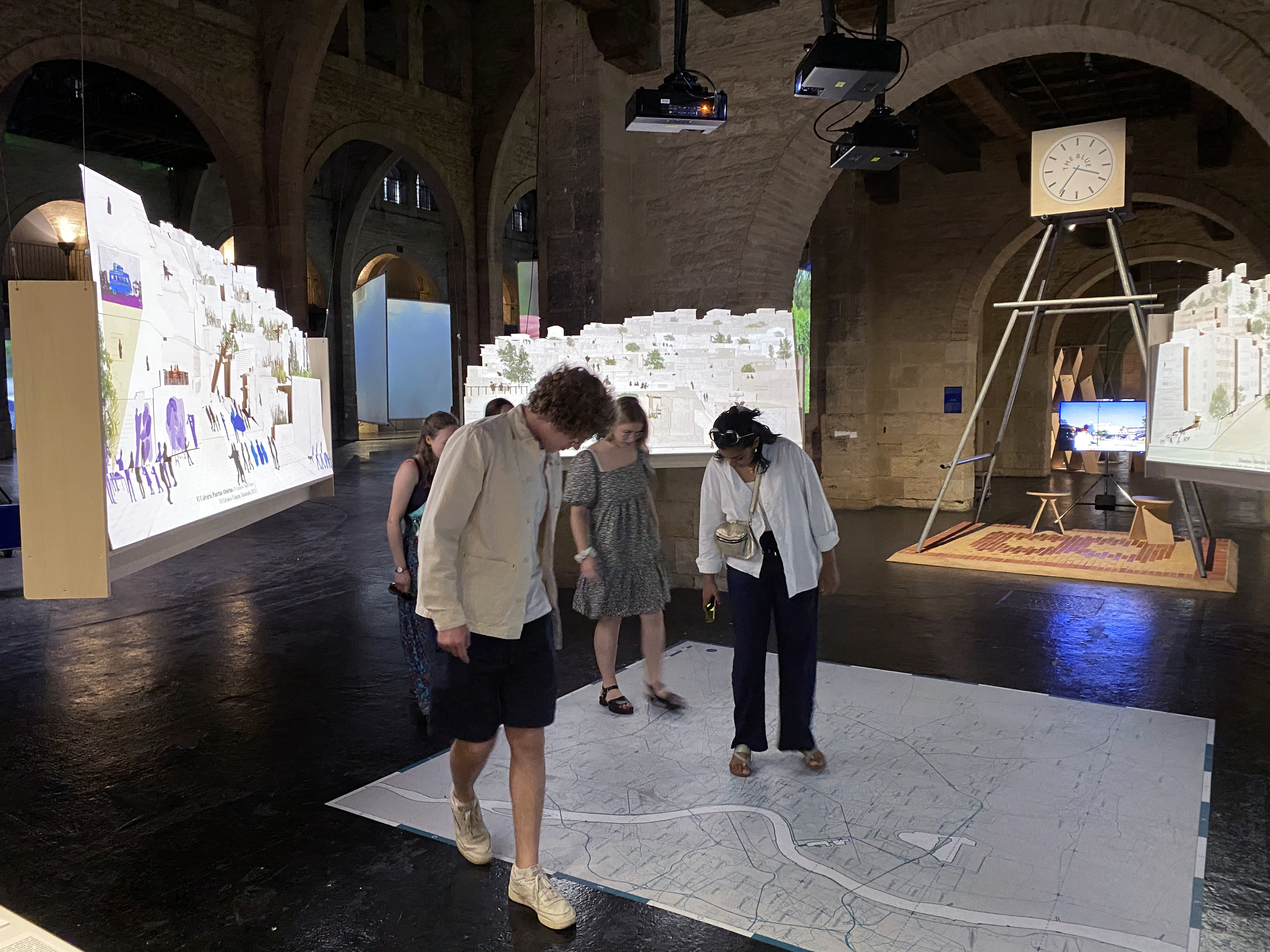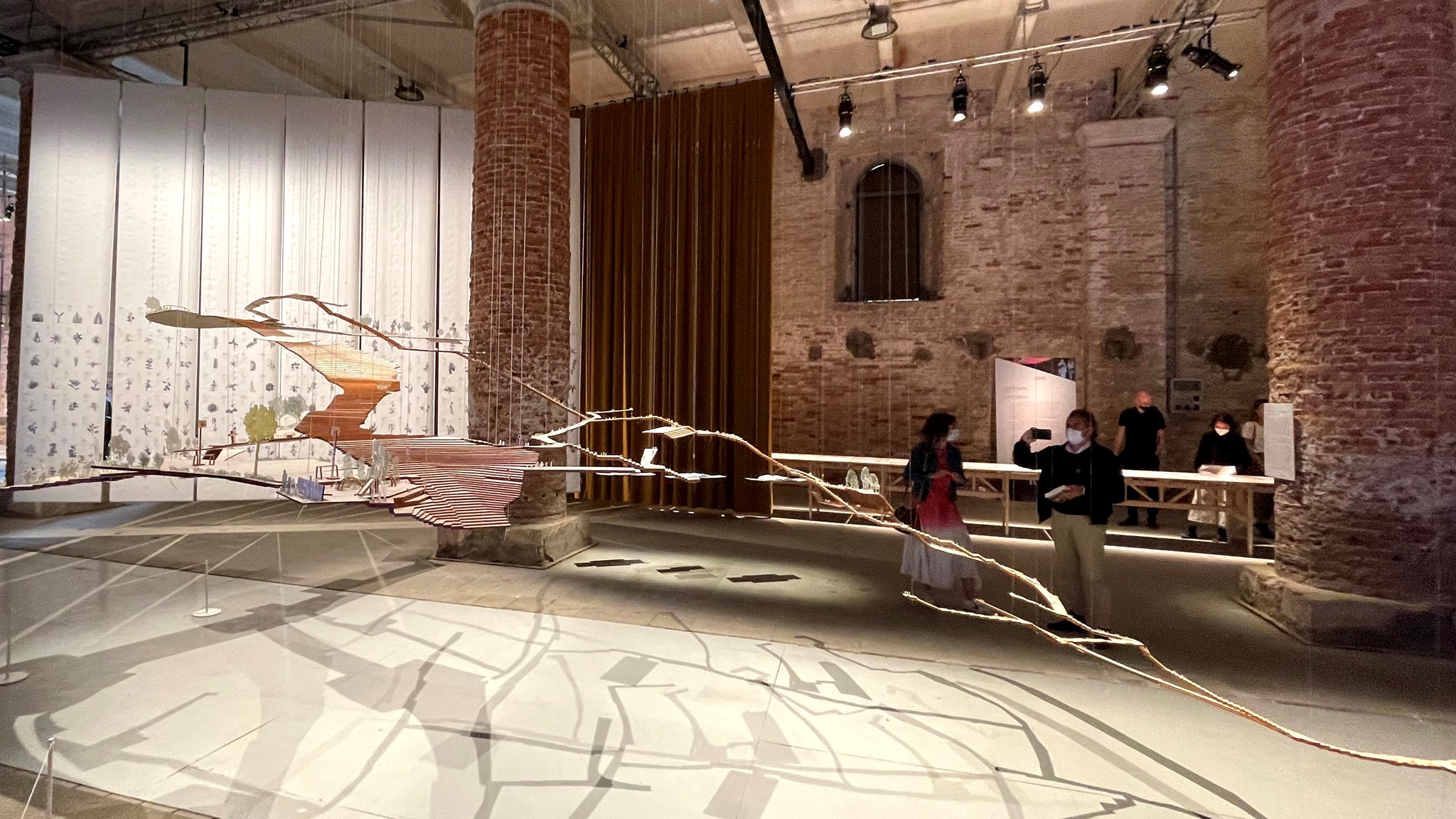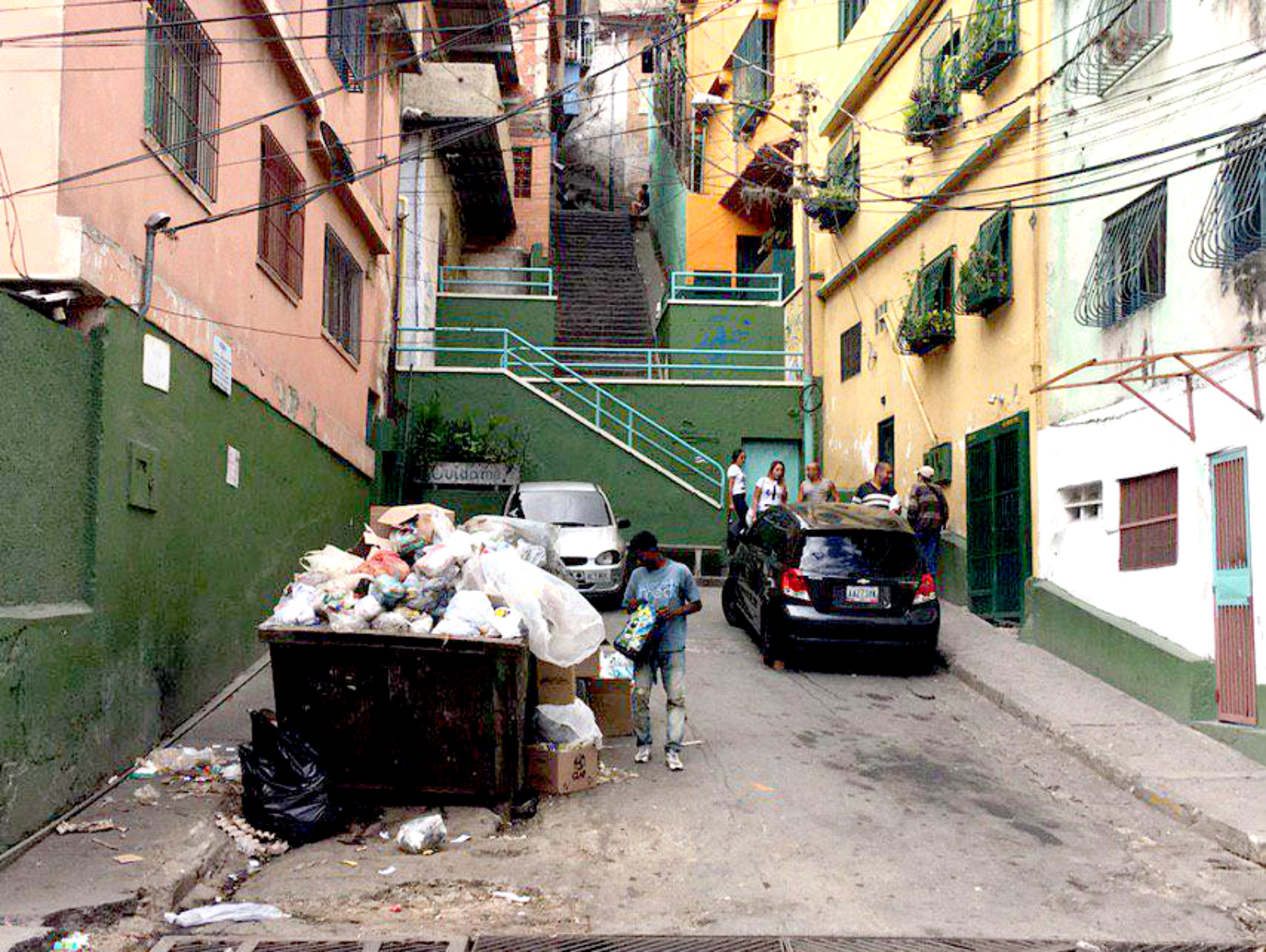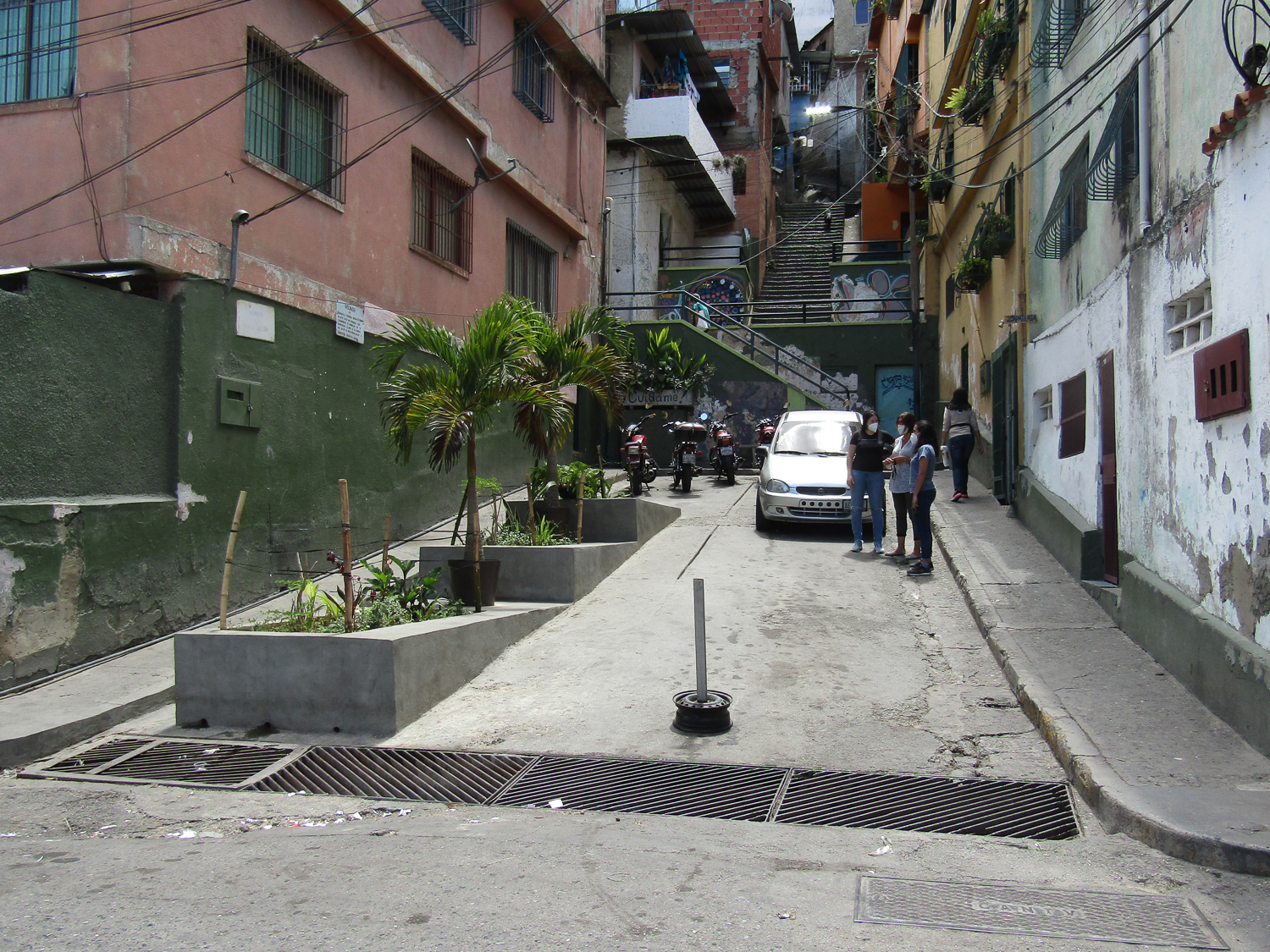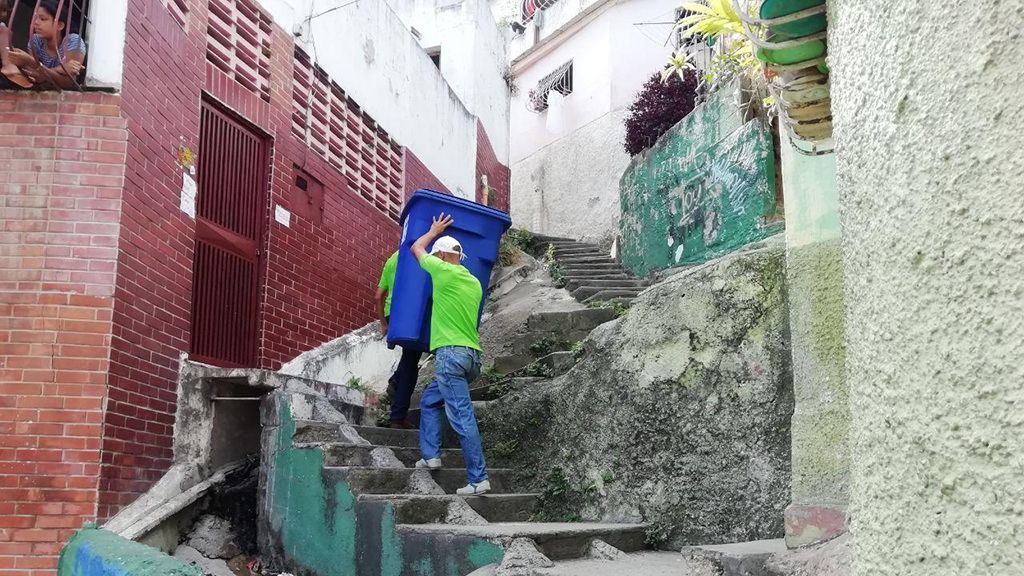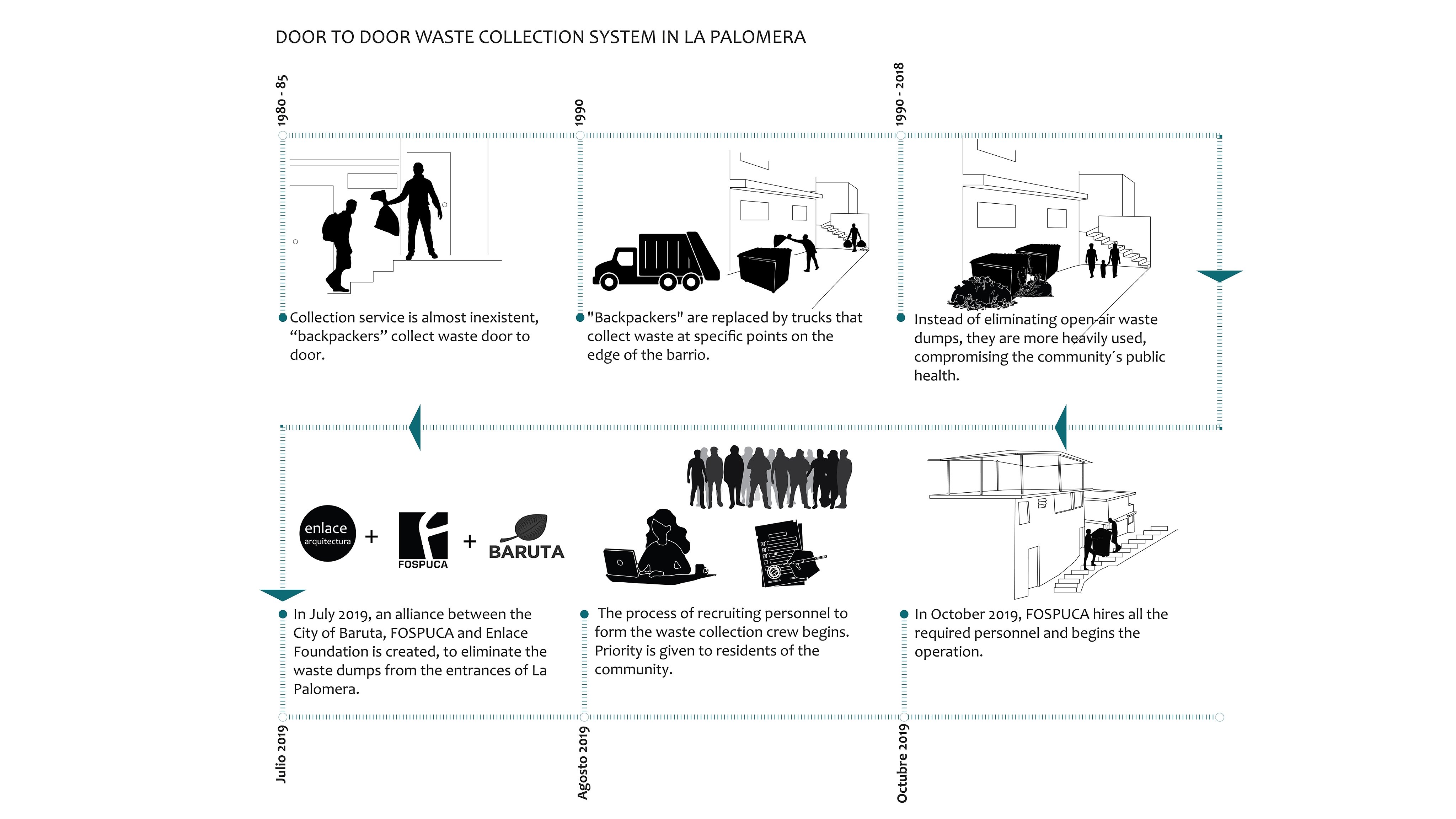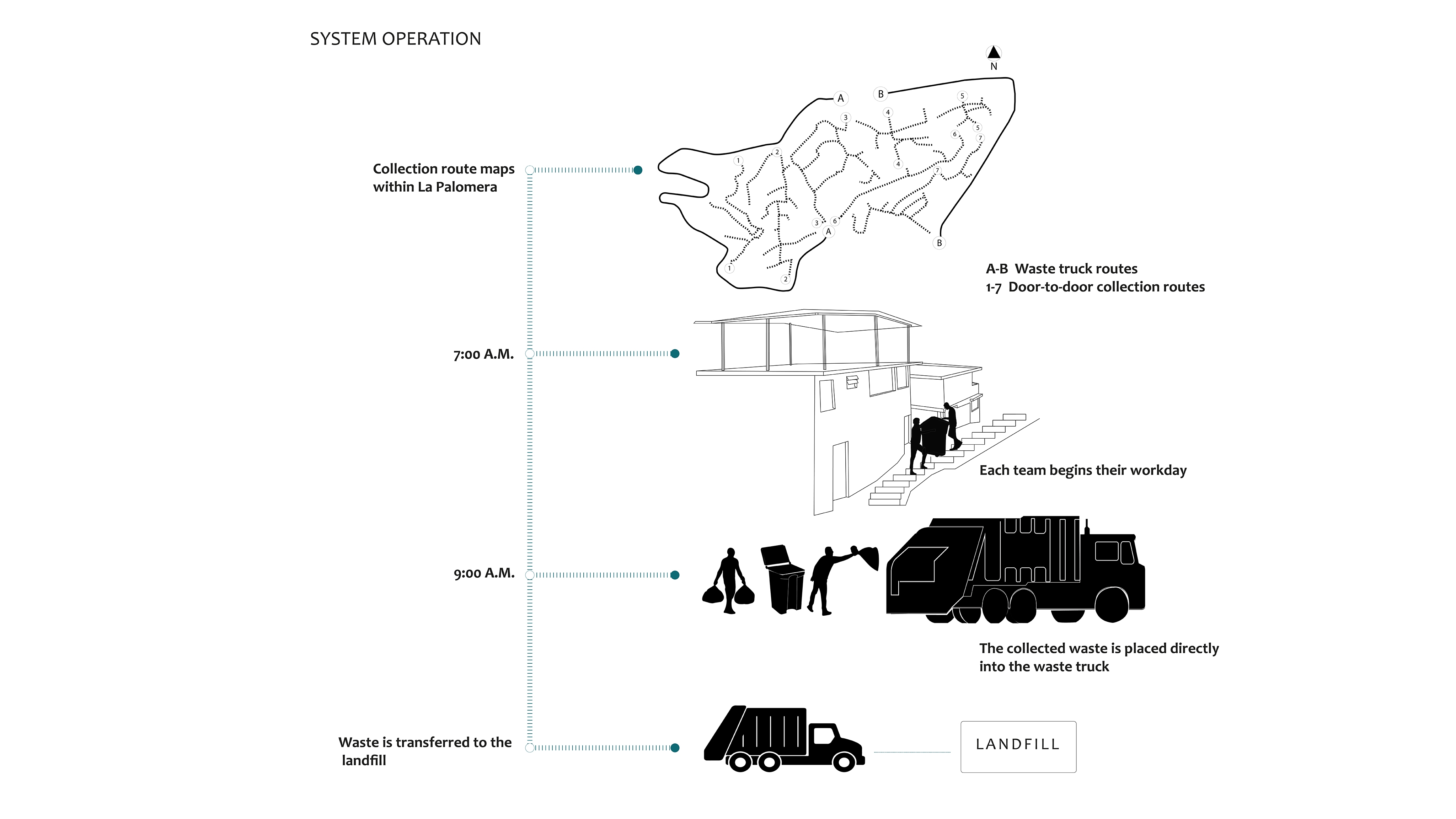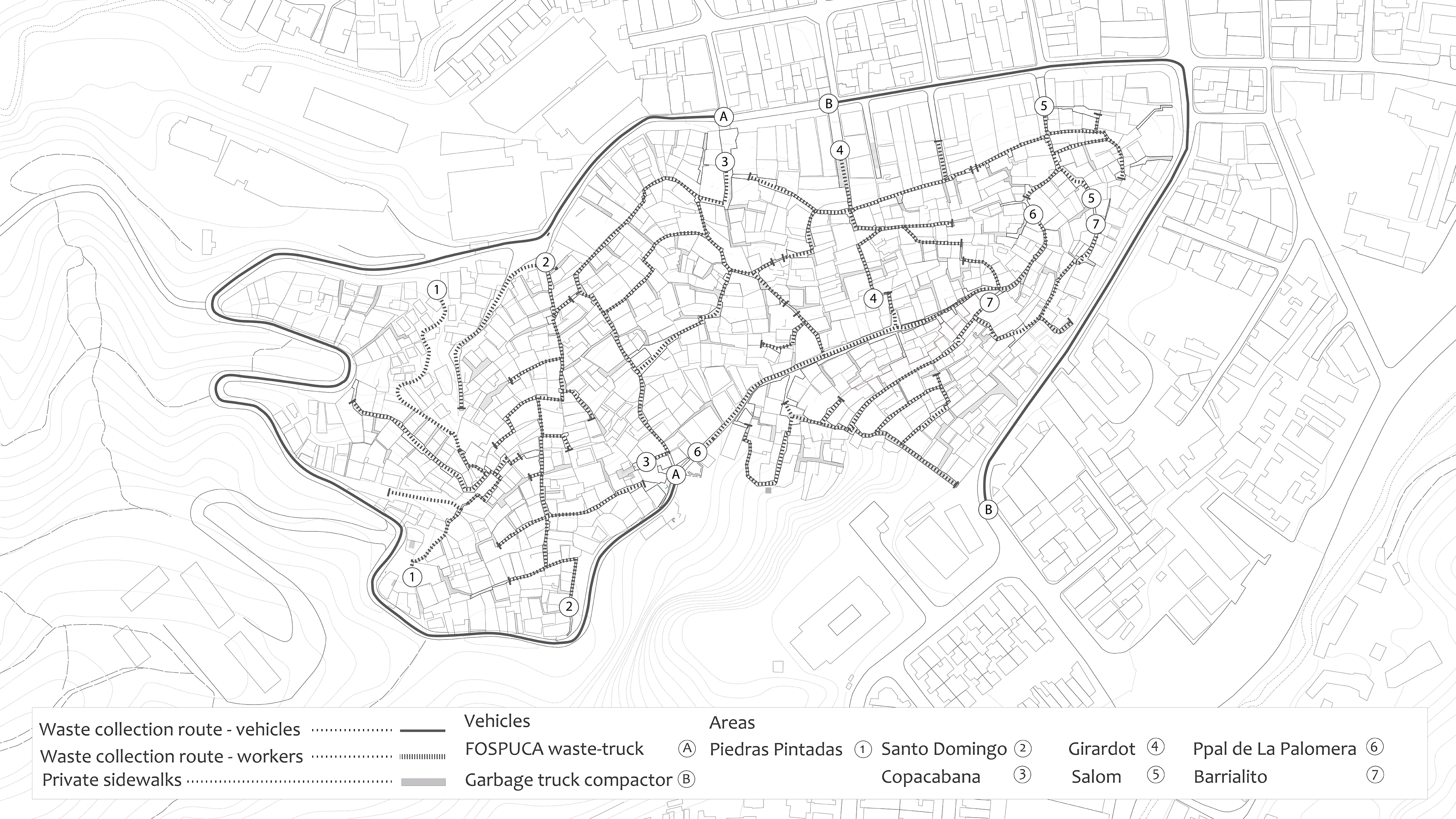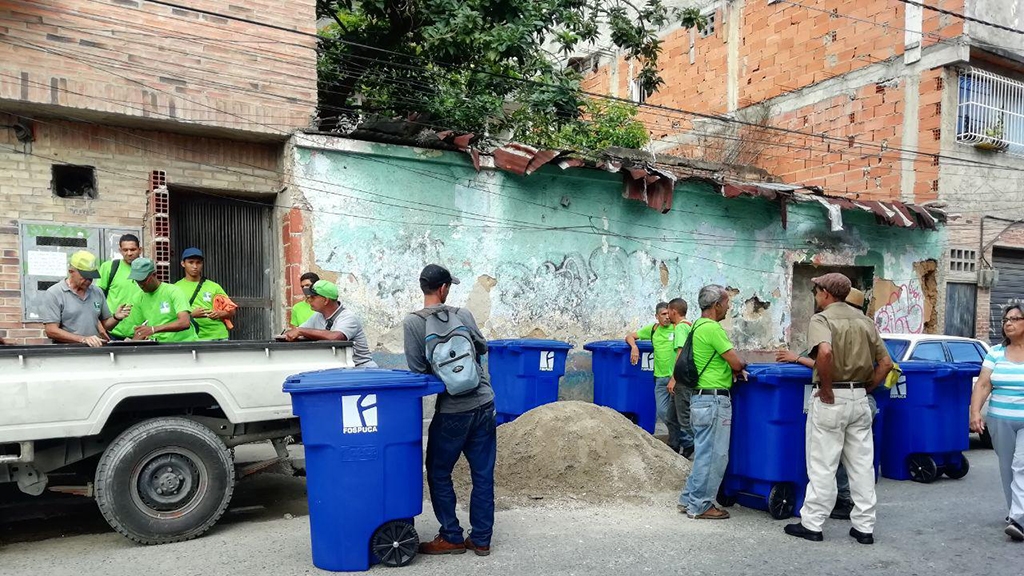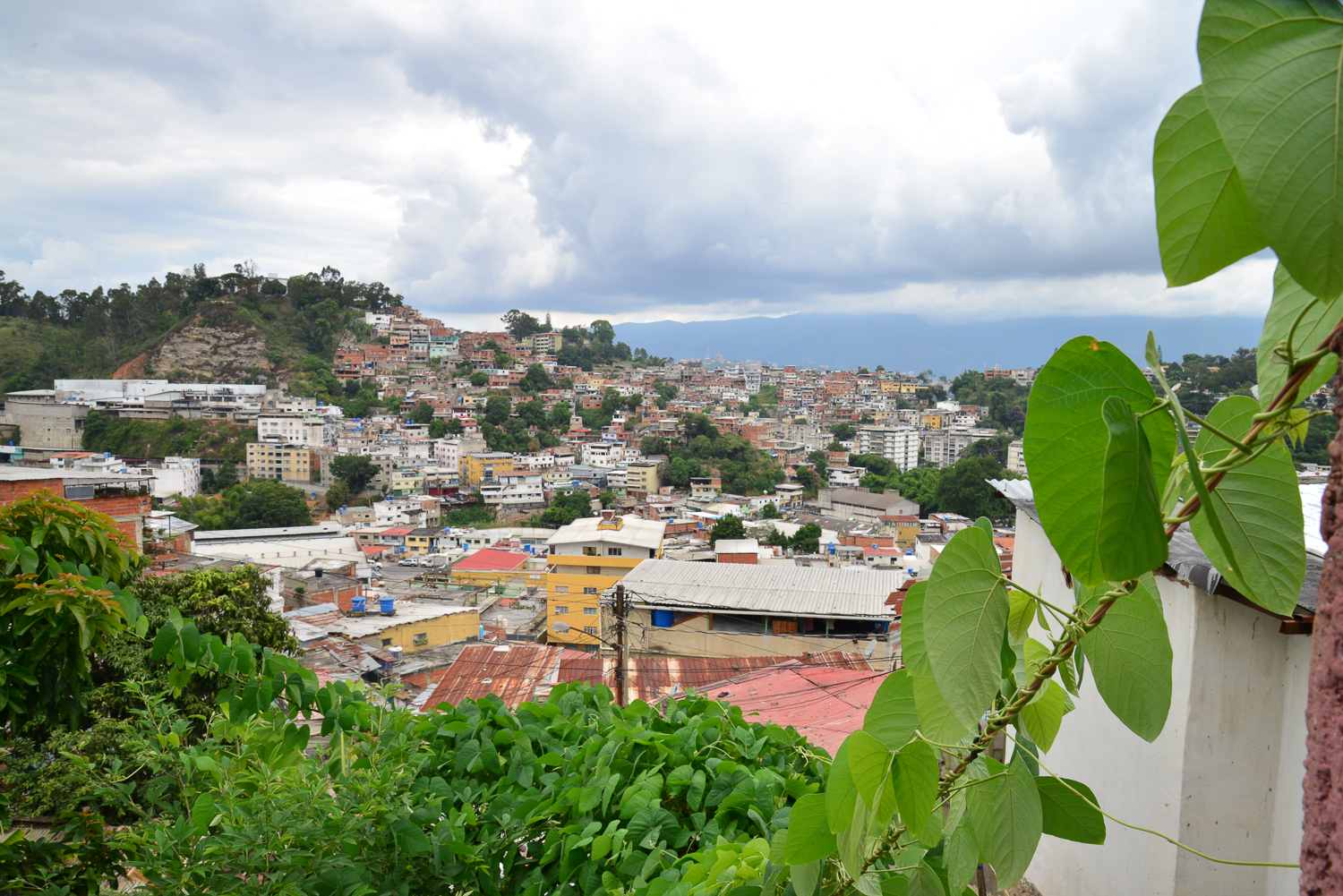-
The transformation of a self-built neighborhood
La Palomera, Caracas Venezuela
2018

Rows of residences washed in coats of faded green, bright yellow, and tangerine paint rise and fall in tendrils. Lush gardens spill from backyard terraces and into walkways and stairs, that meander and fold their way through the neighborhood. Children know their way through the winding pavements by heart, their unbridled voices and pattering of feet echoing to neighbors long before they emerge around a corner. Yet, visitors to the barrio of La Palomera quickly note that it does not follow the gridded, planned logic of a traditionally conceived, ‘city.’ Spontaneous in growth, with buildings two to four-stories in height, some of which date all the way back to 1937, La Palomera today extends over 16 hectares with a population density over 436 people per hectare—one of the highest in Caracas, Venezuela. Residents of La Palomera hold deep ties to their place, as many are direct descendants of the community founders. Over time, they have created nine sectors that make up the neighborhood: La Acequia, Barrialito, Las Brisas, La Ceiba, Copacabana, La Cruz, Santo Domingo, Fundadores, and Piedra Pintada. Cultural traditions linked to the neighboring Baruta colonial town include celebrations of the Cruz de Mayo and Paradura del Niño, while residents of each sector cultivate abundant vegetation for their own consumption.
La Palomera, with its extemporaneous growth and deep-seated roots in Caracas’ history, is not recognized by many residents and the government as an integral part of the city. Naturalized as “informal” and “marginal,” the barrio faces a long history of discrimination and condescension from non-barrio residents, receiving a lower quality of services compared to the rest of the city. Road signs deny the existence of La Palomera and any other barrio, as if these neighborhoods were invisible, despite being the residence of over half of Caracas’ population. Addressing this perception of La Palomera and barrios as “Other” to the city, Enlace Arquitectura, Ciudad Laboratoria, and members of the community engaged in a cultural and educational initiative called “Integration Process Caracas, (IPC),” in 2018. The birth of this program marked the beginning of a year-and-a-half of activities that would invite Caracas residents to recognize La Palomera as a neighboring community, such as mapping vegetation in residential gardens, walks, bocce games, celebrations, dances, stories, and mapping exercises of the barrio. La Hacienda La Trinidad Parque Cultural, Fundación Bigott, the City of Baruta, artists, journalists, and educators produced an organic programming that gradually built a shared discourse of the city that included its barrios - the complete city
Public spaces
Placita La Cruz: This plaza in the La Cruz sector of La Palomera is part of a row of public spaces that include a basketball court frequented by youths, a bocce court, and the plaza where the cross used in the La Cruz de Mayo celebrations is located. We cleared out what had been a clandestine dump for decades and transformed it into a public square where children can play.
Parque Las Brisas: At its highest point, La Brisas enjoys panoramic views of the city and the Avila mountain, over a linear belt of unbuilt space that defines the southern boundary of the barrio. It is mainly used as a parking lot, although it has a bocce court and areas where neighbors sit and talk as well. Enlace Arquitectura worked with the community to transform a shaded space under a large tree into a playground for children. The space is defined by a hexagonal structure with swings, while a concrete bench borders the ravine, inviting adults to congregate and enjoy the views. It was predicated on the success of negotiations between community members with the owners of cars that parked in that space.
Dialogues and Workshops
Integration Process Caracas began in November 2018 as an educational and cultural program led by Enlace Foundation, Ciudad Laboratio and a multi-disciplinary team of journalists, architects, activists, artists, designers, and members of the community. Sponsored by the U.S. State Department, it tackled the negative stigma associated with barrios by inviting participation in walking tours, music, art, workshops, and celebrations. These activities, the Manifesto to the Complete City, and a synthesis of the experience was translated into an exhibition, and sought to encourage the acknowledgement of barrios as an essential part of the city. They were also presented at the 17th International Architecture Biennial in Venice 2021.
Gatherings - Early on, members of the IPC program met in La Palomera to discuss distinctions between the ‘formal’ and ‘informal’ city, as well as participate in a a workshop lead by Katiuska Camargo who invited people to propose transformations of La Palomera. Five more gatherings and workshops followed, ranging from walks throughout the barrio, song and dance, reflections between attendees, pedagogy, and a survey of the neighborhood’s green spaces—all with the goal of facilitating discourse between visitors and residents on a more inclusive definition of city and La Palomera’s role within it. Concurrently, IPC hosted four workshops to engage local children, adults, and neighbors from La Palomera.
Celebrations - The celebration of the Cross of May evolved through conversations with the community to recover a religious holiday and the traditions associated with its celebration. It took place on May 25, 2019 and was part of the program Integration Process Caracas. The day began with a procession of the La Palomera that began in the Bolívar Square in Baruta, where the 3.4 x 3.0-meter model was assembled. Then a procession led by the musical group “Tambor y Gloria” proceeded through La Palomera, to the La Cruz sector. Volunteers carried portions of the model up the ascent and reassembled them at the top of the barrio.
Art projects with the community
Green Workshop - Led by Gabriel Nass and Ambar Armas, this workshop mapped the personal gardens of residents in La Palomera, and in the process became friends with garden owners, learning their stories, and sharing a wealth of knowledge about the local vegetation, including plants cultivated for cooking, curing illnesses, and adornment. These gardens embody cultural practices that had been passed down through generations, making their way into a publication: “Ethnobotanical Dictionary of Plants from the Gardens of La Palomera.” Disseminating the existence of these gardens disproves the myth of a barren barrio, instead revealing a diversity of plant species and compelling relationships between the inhabitants and their natural environment.
Book and printing workshop - Local high school students observed, sketched, and narrated their surroundings, turning their experiences into graphic booklets using xylography (engraving in wood). These booklets were exhibited at the Cross of May celebration, the school and at the Hacienda La Trinidad Cultural Park.
House is made with the body - Attended by children between the ages of 6 and 12, this workshop led by María Fernanda Abzueta and Dora Peña of Laboratorio Ciudadano No Violencia Activa encouraged participants to explore three scales: the body’s personal space, the private space of a house, and the public space of a community, intending for children to reflect on the ways in which physical and cultural borders separate the barrio from the city. Dance and movement exercises symbolically diluted these imaginary boundaries, instead weaving a sense of community throughout the body and to its neighbors.
Cultural capsules - Children of local schools learned traditional Venezuelan dances led by the group Ensayo Colectivo (Bigott Foundation) and Tradition 360, with artists María Alejandra Orozco, Harold Palacios, Nicolás Brito, Sara Medina, Keyner Quiñónez, Crisfremeli Marrero and Paola Puga. This workshop proved to be a powerful integration strategy between children and adults, as well as between the community of La Palomera and its neighbors.
Annex Casa de Todos
As part of the IPC program, Enlace Arquitectura and the neighbors transformed an existing building located at the threshold between the town of Baruta and La Palomera into a space for art and culture for both the local community and the entire city. Beginning with the symbolic opening of two doors to access the interior of the center, the annex was opened to the public for shows, music and traditional Venezuelan dance and sancocho, in the event "Nothing Out of the Ordinary." Young people, children and adults participated, from La Palomera and other neighboring communities. La Casa de Todos resists a governmental and hygienist model of public development, offering itself to many communities with a multitude of perspectives: a place that promotes entrepreneurship, negotiation between neighbors and greater mutual respect between the neighborhood and its surroundings. Located completely outside the political sphere, this space allows people to act as agents of change.
Exhibitions
Chicago Architecture Biennial - Enlace Arquitectura and Ciudad Laboratorio exhibited a piece entitled "Microprocess - a choreography of urban connections", which staged the barrio of La Palomera together with other neighborhoods in Caracas as small perspectival theaters. Made of wood, the exhibition communicates the intention of integrating the city through the participation of people in arts and culture. The communities exhibited in "Microprocess" are involved in a complex and organic process of encounters that give rise to mutual recognition. This piece was also featured in the exhibition "Commun: une architecture avec les habitants" at Arc en Rêve Center d'Architecture, Bordeaux, France, between the months of June and September 2022, and at the Centro Cultural Parque España in Rosario Argentina.
Biennale di Venezia 2021 - Enlace Arquitectura presented a wooden model of the public space (walkways, stairs, squares and gardens) in La Palomera measuring 8 meters by 4.5 meters, suspended from the ceiling of Le Corderie. As part of the 17th International Architecture Exhibition at the Biennale di Venezia 2021, this installation addressed the theme "How will we live together?" It included the Ethnobotanical Dictionary of plants from the gardens of La Palomera, together with drawings of 18 gardens and 3 public spaces. Instead of proposing "improvements" to the neighborhood, the installation rescued the spatial and cultural richness that already exists in La Palomera.
Complete City - This exhibition represented the culmination of the IPC's work in La Palomera. Sited at the Hacienda La Trinidad and organized by Enlace Fundación, Ciudad Laboratorio, Fundación Bigott, Laboratorio Ciudadano, Tradición 360, Ensayo Colectivo, Taller Verde and the support of the community of La Palomera and the Baruta Mayor's Office, this exhibition was an opportunity to destigmatize the negative perception of the neighborhoods and expand the mental map of Caracas to include the neighborhoods as a vital part of the city.
Services
Solid waste management - In La Palomera, waste containers were typically placed at each entrance, representing a physical and visual barrier between it and its neighboring ‘city.’ Since 2019, Enlace Fundación worked with the garbage collection company Fospuca and the City of Baruta to develop a door-to-door collection system. The company collects waste twice a day, covering seven routes in the neighborhood. This allows for the elimination of outdoor waste bins at the entrance and represents a symbolic and practical gesture of equity.
Planters - Following the development of the door-to-door garbage collection program, the waste container was removed from Salom street. A garden was built where the neighbors planted and donated vegetation. Today it is a temperate place where people sit and talk while they go in and out of La Palomera
Complete City
“Through walks, events, celebrations, La Palomera, has been telling us about its absolutely ideal fluid ways of organizing and living together: they are lessons to heal the fracture, and to promote connection,” reflects Elisa Silva. Efforts to promote recognition of La Palomera as a part of the complete city and free misconceptions of the barrio are ongoing, as well as programming in the community center of Casa del Todos. Indeed, Caracas is only truly complete “when we understand the whole as a Pangea of differences that contains all the circumstances without distinction.”



